Forums
- Forums
- Axis And Allies Forum
- General Discussion
- Aviation News
Aviation News
Post a reply
- Go to Previous topic
- Go to Next topic
- Go to Welcome
- Go to Introduce Yourself
- Go to General Discussion
- Go to Screenshots, Images and Videos
- Go to Off topic
- Go to Works in Progress
- Go to Skinning Tips / Tutorials
- Go to Skin Requests
- Go to IJAAF Library
- Go to Luftwaffe Library
- Go to RAF Library
- Go to USAAF / USN Library
- Go to Misc Library
- Go to The Ops Room
- Go to Made in Germany
- Go to Campaigns and Missions
- Go to Works in Progress
- Go to Juri's Air-Raid Shelter
- Go to Campaigns and Missions
- Go to Works in Progress
- Go to Skinpacks
- Go to External Projects Discussion
- Go to Books & Resources
-
 Main AdminA Colombian Air Force A-29B Super Tucano taxis after landing during Exercise Green Flag East at Barksdale Air Force Base, La., Aug. 22, 2016. Four A-29B Super Tucanos manned by both American and Colombian aviators flew simulated close-air-support missions with U.S. Army units at Fort Polk, La,. (U.S. Air Force photo / Senior Airman Mozer O. Da Cunha)
Main AdminA Colombian Air Force A-29B Super Tucano taxis after landing during Exercise Green Flag East at Barksdale Air Force Base, La., Aug. 22, 2016. Four A-29B Super Tucanos manned by both American and Colombian aviators flew simulated close-air-support missions with U.S. Army units at Fort Polk, La,. (U.S. Air Force photo / Senior Airman Mozer O. Da Cunha)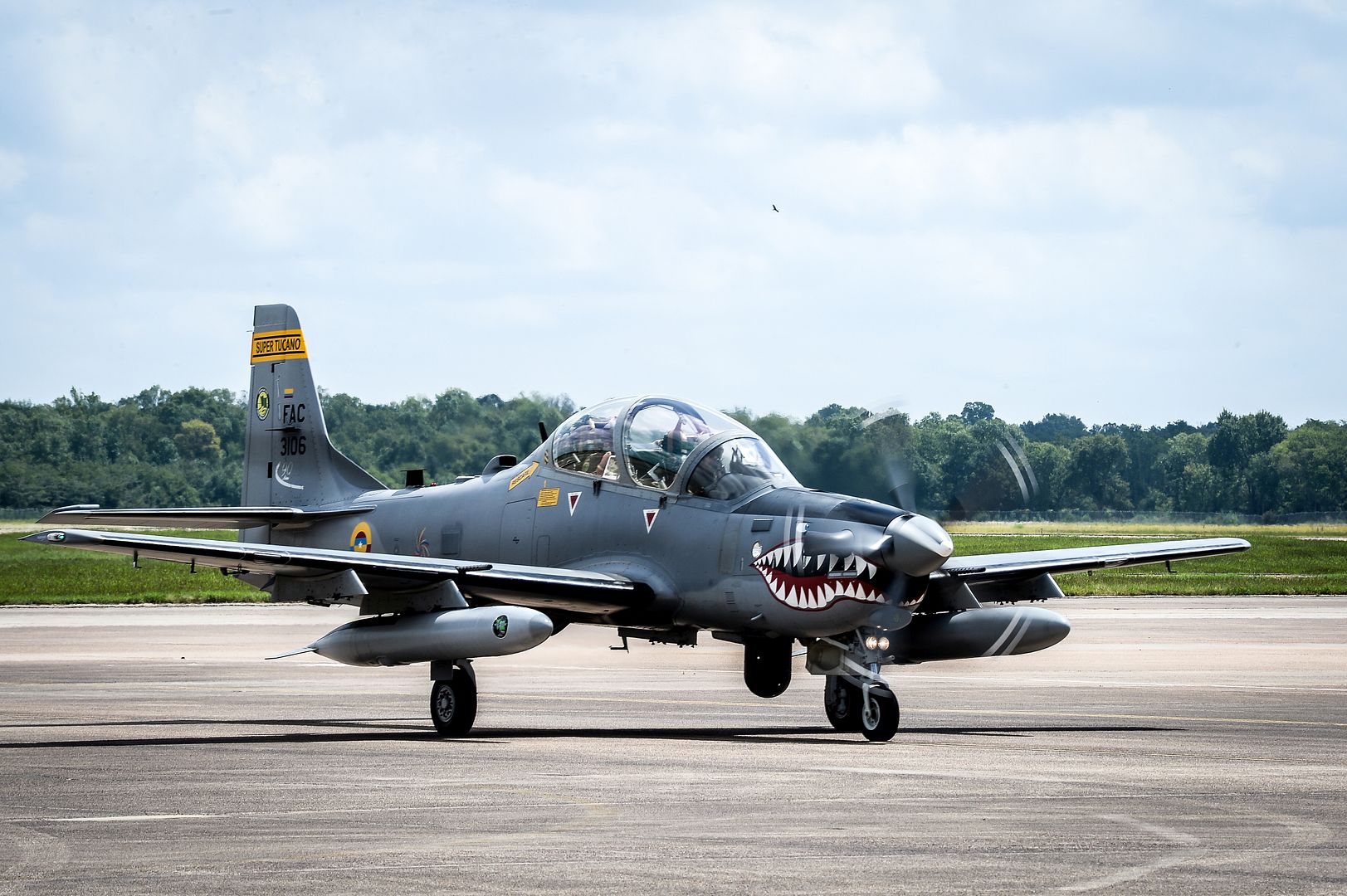
U.S. 5TH FLEET AREA OF OPERATIONS (Aug. 22, 2016) The "Mad Foxes" of Patrol Squadron (VP) 5 and the P-8A Poseidon aircraft, assigned to the squadron, are part of the Navy's replacement platform for the P-3C. The P-8A Poseidon is a modified Boeing 737-800ERX, designed to secure the Navy's future in long-range maritime patrol capability, while transforming how the Navy's maritime patrol and reconnaissance force will man, train, operate and deploy. (U.S. Navy photo by Mass Communication Specialist 2nd Class Victoria Kinney/Released)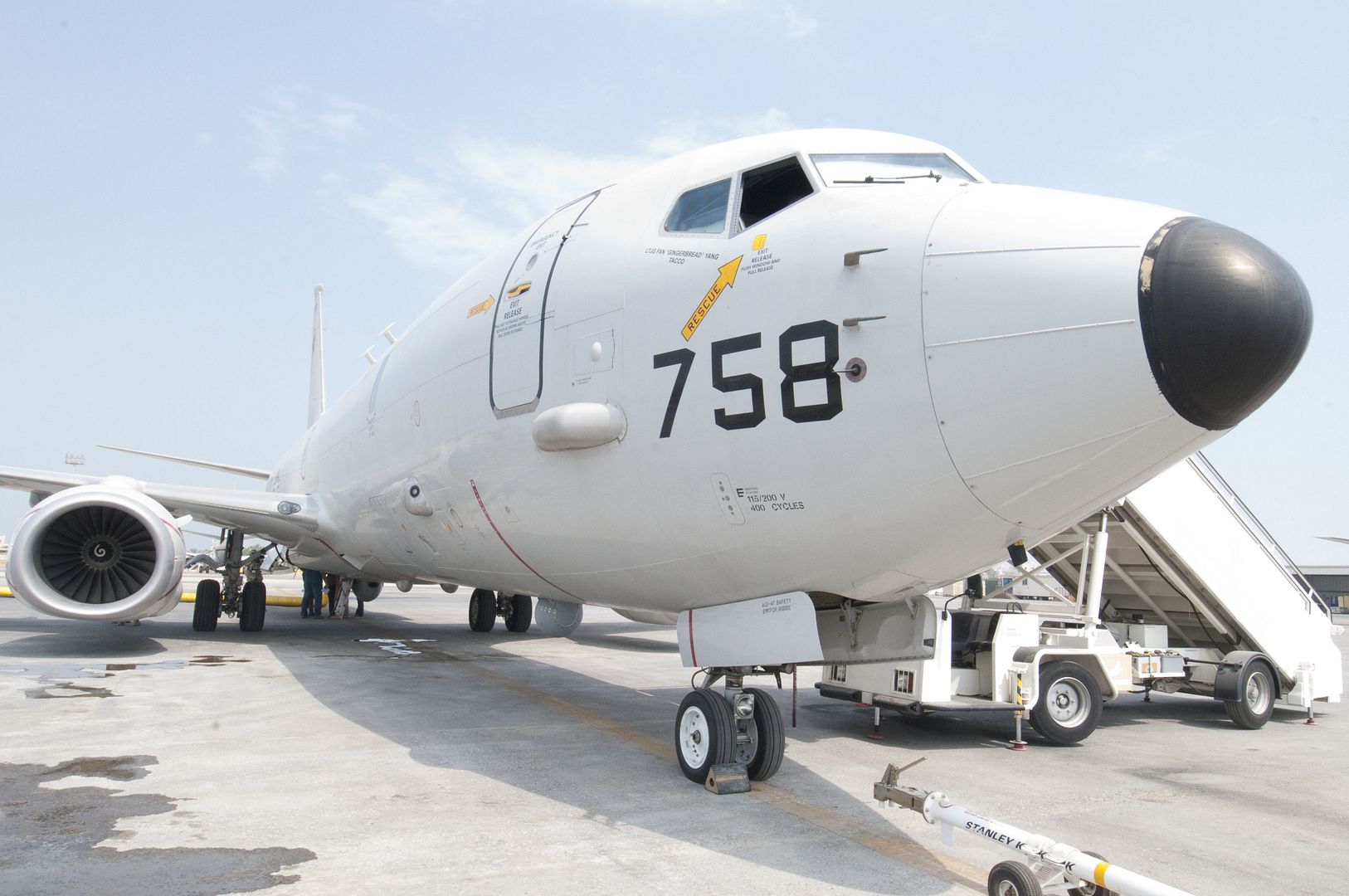
An F-16C Fighting Falcon from the 93rd Expeditionary Fighter Squadron taxis out of a parking spot Aug. 22, 2016, Bagram Airfield Afghanistan. The F-16s from the 93rd EFS are the only dedicated fighter aircraft in Afghanistan. (U.S. Air Force photo by Capt. Korey Fratini)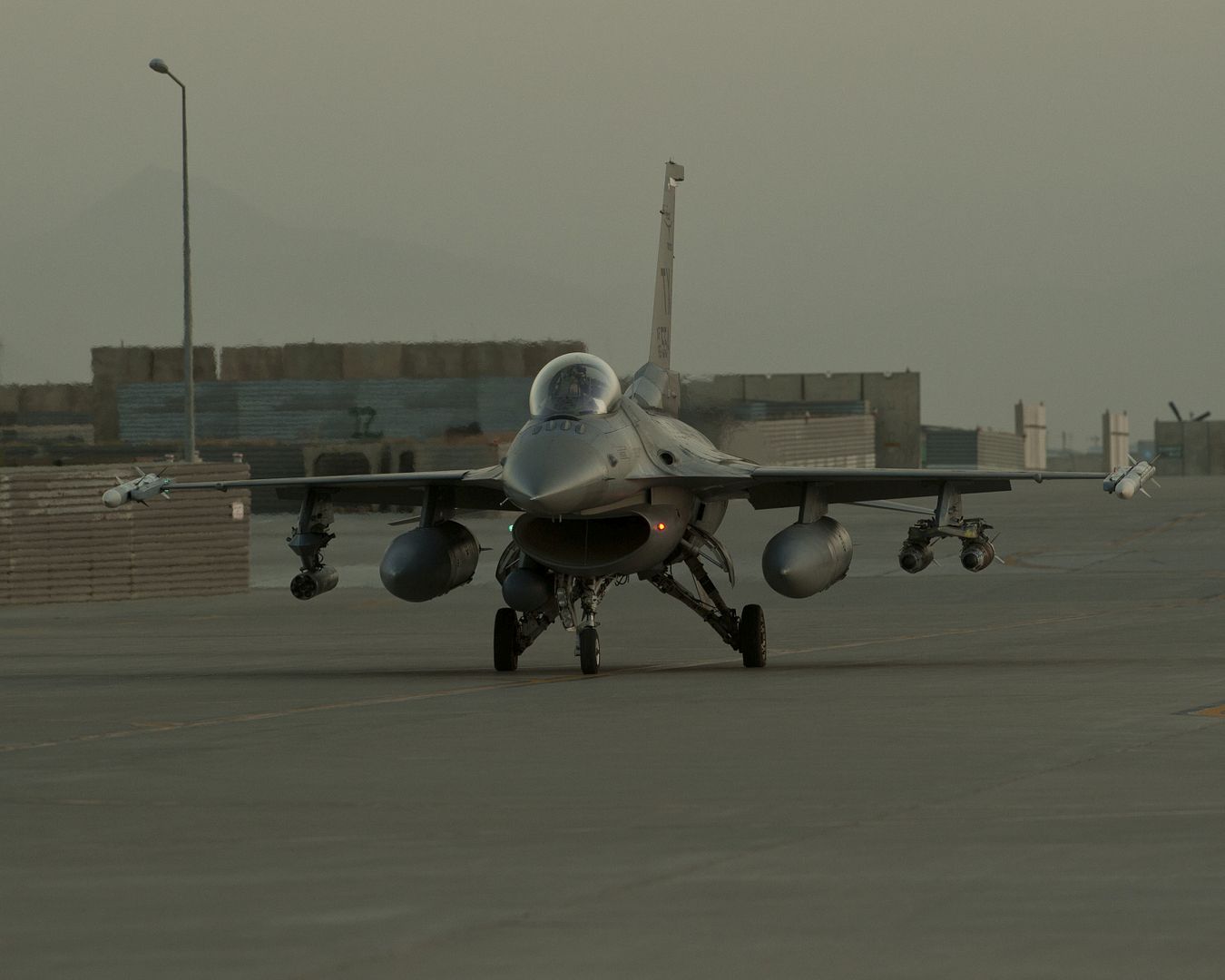
An F-16C Fighting Falcon takes off for mission in the skies of Afghanistan Aug. 22, 2016, Bagram Airfield, Afghanistan. F-16s deployed to Bagram Airfield provide over watch and close air support to U.S. and coalition forces through the Afghanistan area of operation. (U.S. Air Force photo by Capt. Korey Fratini)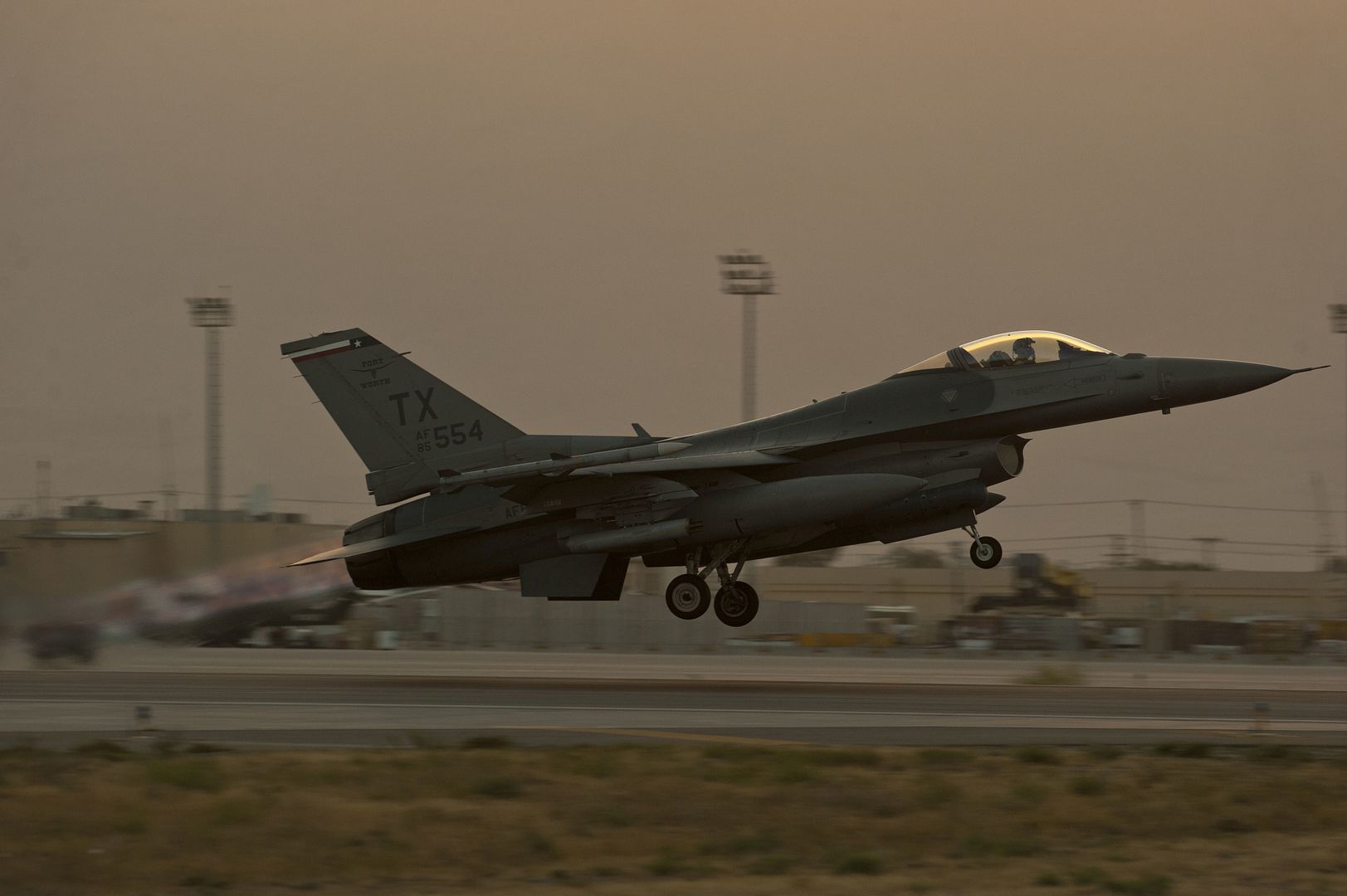
Two Royal Air Force Typhoons depart ?mari Air Base, Estonia, as part of a multilateral training exercise Aug. 23, 2016. The RAF is participating in a flying training deployment with the U.S., Sweden, Estonia and Finland to maintain readiness and build interoperability between the nations. (U.S. Air Force photo by Senior Airman Erin Trower/Released)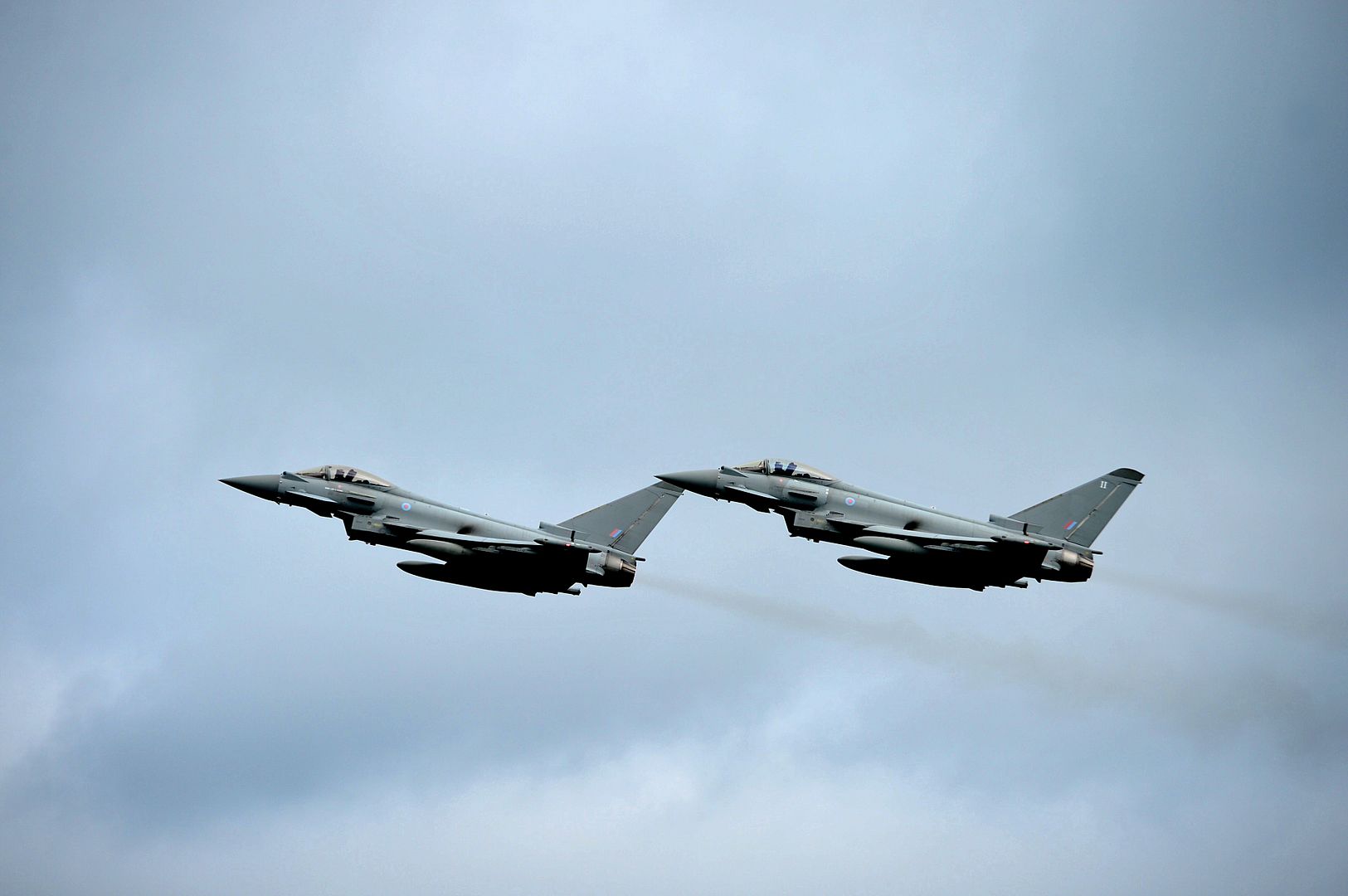
An F-16 Fighting Falcon, assigned to the South Carolina Air National Guard 169th Fighter Wing, taxis to the runway before a sortie in support of Exercise Beverly Herd 16-2 at Osan Air Base, Republic of Korea, Aug. 24, 2016. The Guardsmen, deployed to Osan for a theater security package, work alongside the 51st Fighter Wing during exercises on base to strengthen their capability of flawlessly integrating into a wartime scenario. (U.S. Air Force photo by Senior Airman Victor J. Caputo)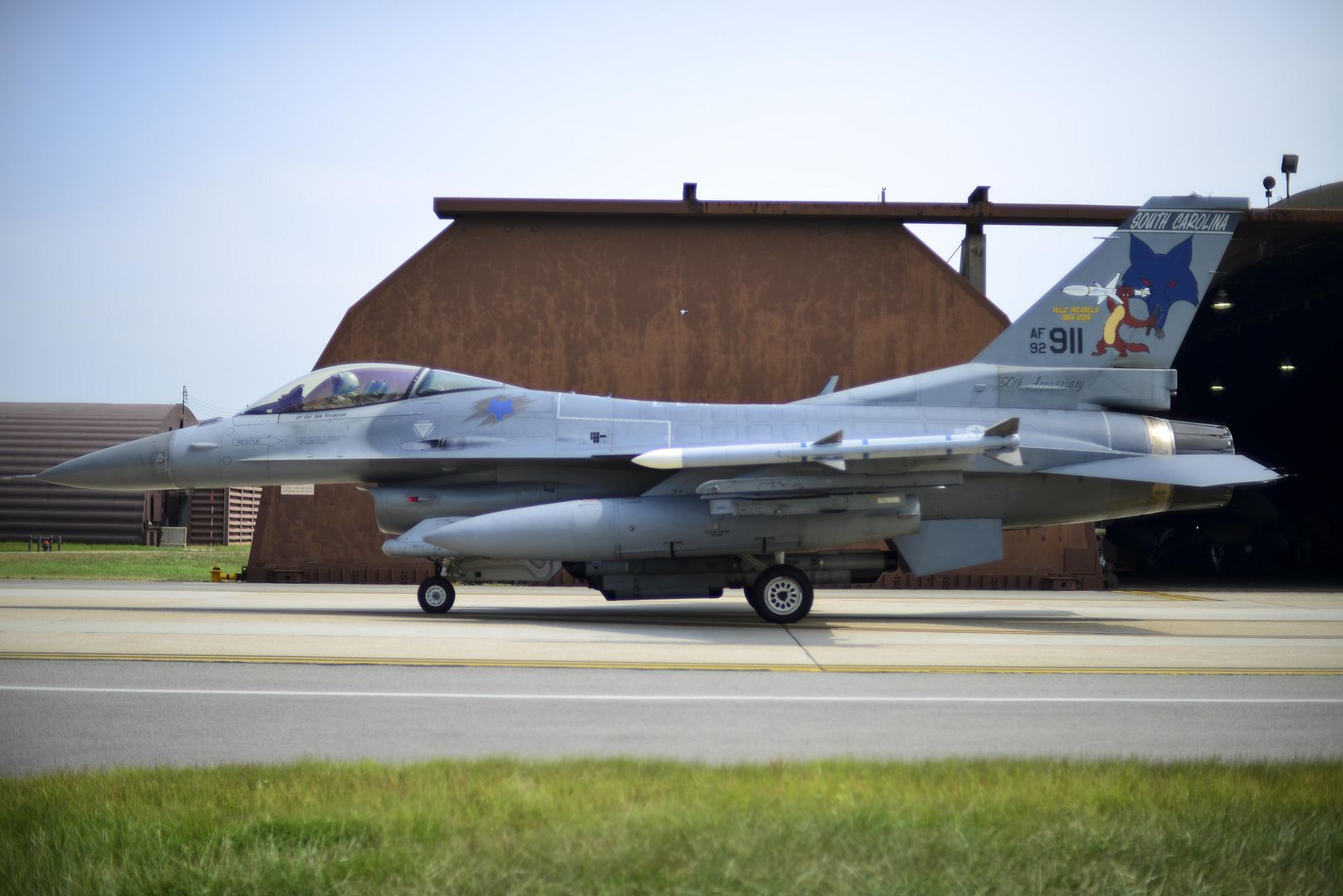
An A-10 Thunderbolt II, assigned to the 25th Fighter Squadron, taxis along the runway as an F-16 Fighting Falcon, assigned to the South Carolina Air National Guard 169th Fighter Wing, takes off during Exercise Beverly Herd 16-2 at Osan Air Base, Republic of Korea, Aug. 24, 2016. The two airframes were used to fly multiple sorties in support of the exercise, providing both pilots, maintenance and munitions Airmen the chance to hone their quick-turnaround skills. (U.S. Air Force photo by Senior Airman Victor J. Caputo)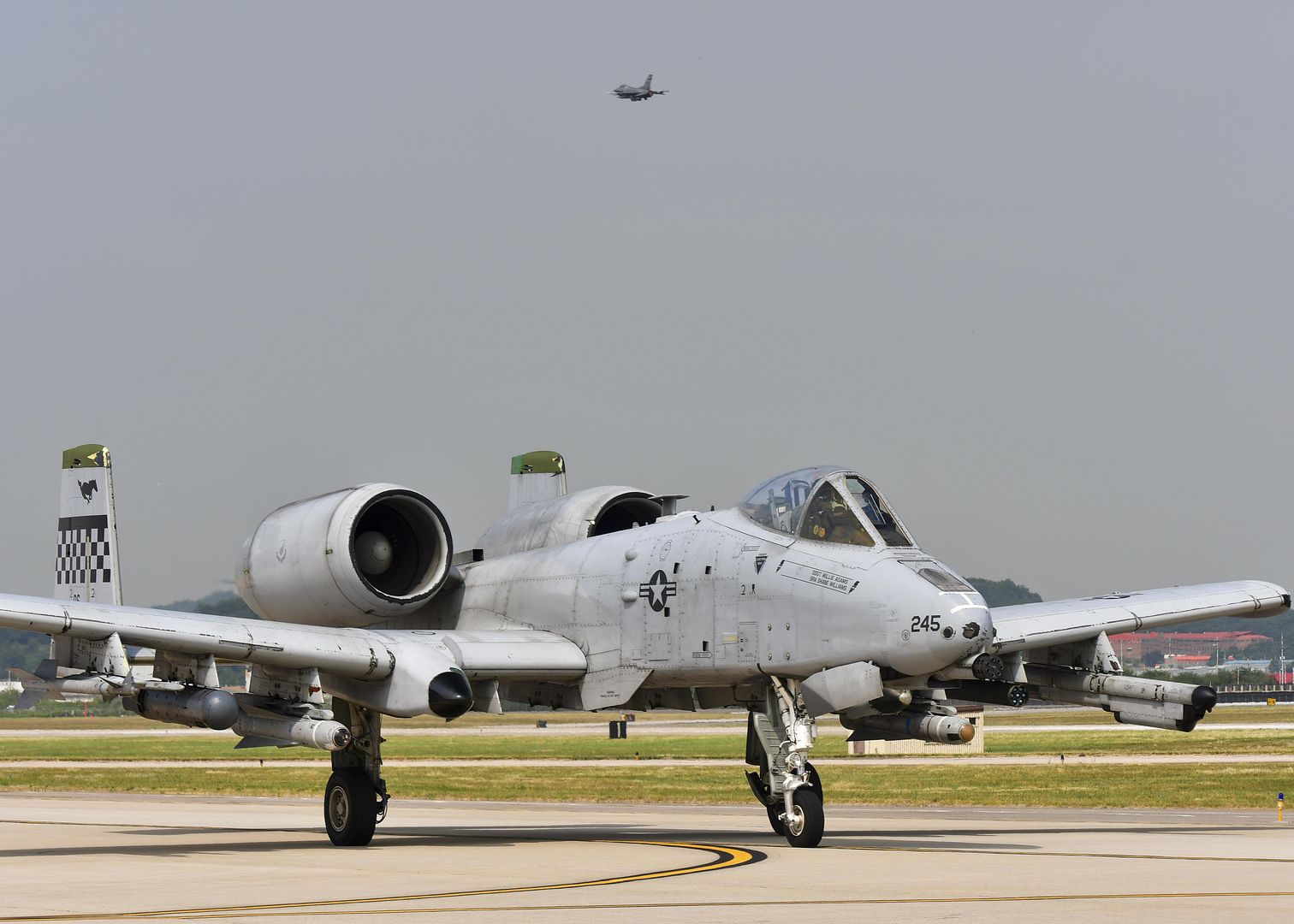
23 August 2016 Press Release
On 22nd of August at 20:05 the first A380 commercial flight landed at RIOgale?o ? Tom Jobim International Airport. This Paris-Rio Air France flight was specifically scheduled on the occasion of the Rio 2016 Summer Olympics. This milestone was celebrated by the airport with a water salute on the arrival of the aircraft. The airport is joining the list of the 230 A380 compatible airports around the world.
RIOgale?o offers three A380 parking stands to allow future A380 scheduled operations. As a result of steady certification efforts in recent years, four airports in Latin America are now ready to welcome A380 commercial operations and support long-term air traffic growth in the region. Joining Tom Jobim International Airport are Benito Juarez Mexico City Airport, Sao Paulo-Guarulhos International Airport and Cancun International Airport.
The A380 is the world?s largest, most spacious airliner that offers passengers the smoothest, quietest ride. Comfortably seating an average of 544 passengers on routes up to 8,200 nautical miles, the A380 has a unique ability to generate revenue, stimulate traffic and attract passengers. The A380 is the only aircraft which has two full decks. Over 130 million passengers have enjoyed the experience of flying on board an A380. Every three minutes, an A380 either takes off or lands around the world.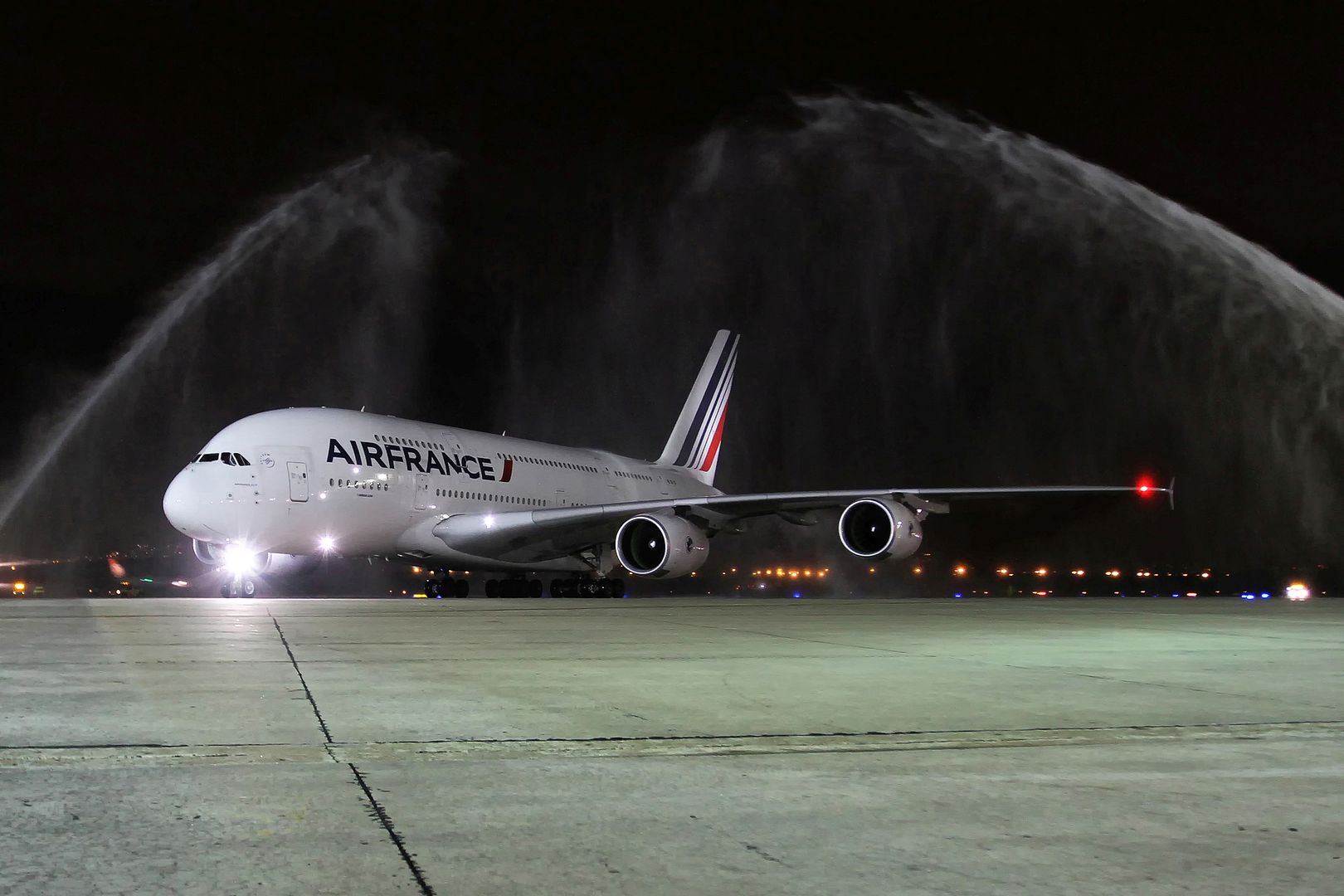
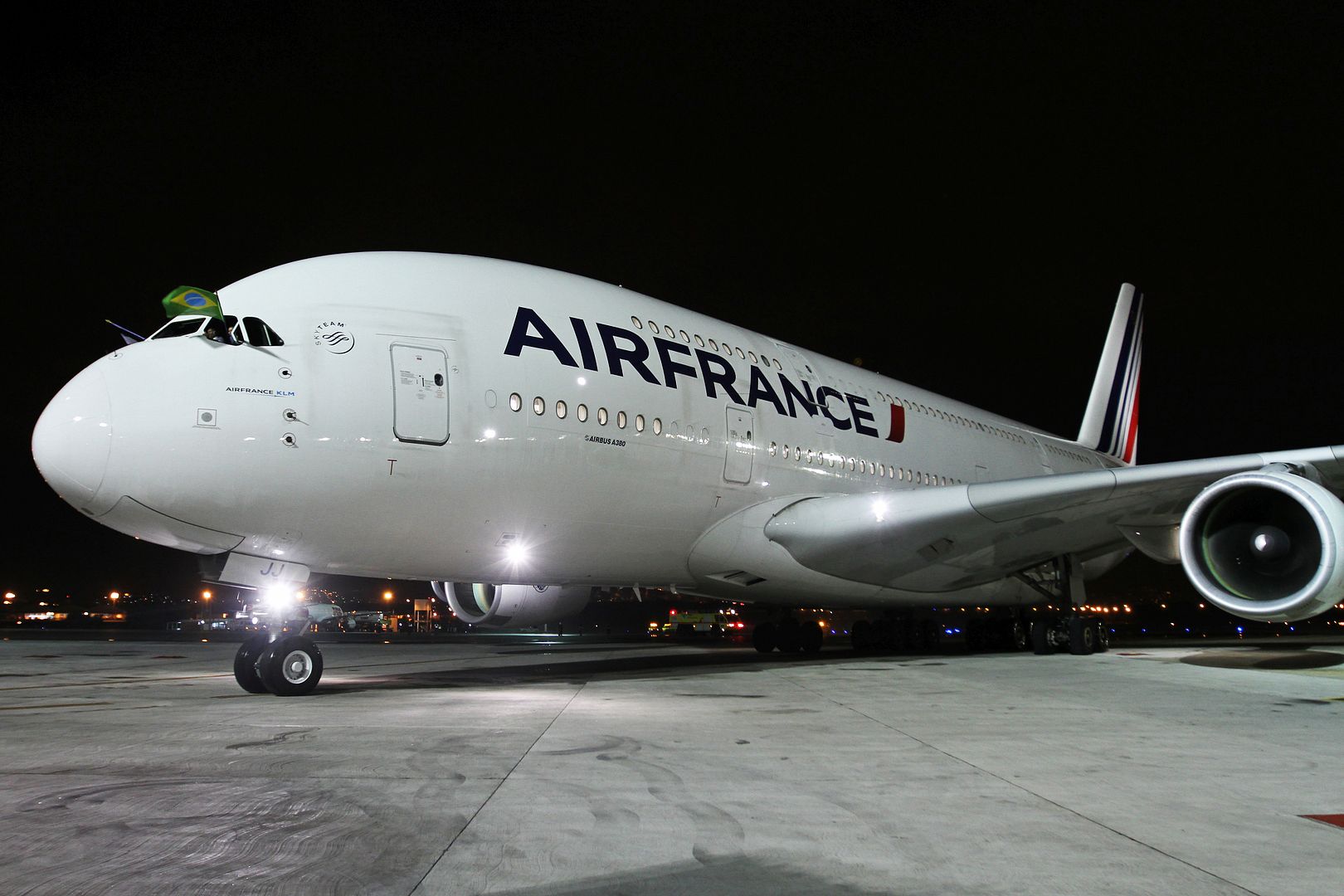
-
 Main AdminAn F-35A and an FA-18 Super Hornet fly in formation over Volk Field Wis. during Northern Lightning, Aug. 23, 2016. Northern Lightning is a tactical-level, joint training exercise that emphasizes fifth and fourth generation assets engaged in a contested, degraded environment. (U.S. Air Force photo by Senior Airman Stormy Archer)
Main AdminAn F-35A and an FA-18 Super Hornet fly in formation over Volk Field Wis. during Northern Lightning, Aug. 23, 2016. Northern Lightning is a tactical-level, joint training exercise that emphasizes fifth and fourth generation assets engaged in a contested, degraded environment. (U.S. Air Force photo by Senior Airman Stormy Archer)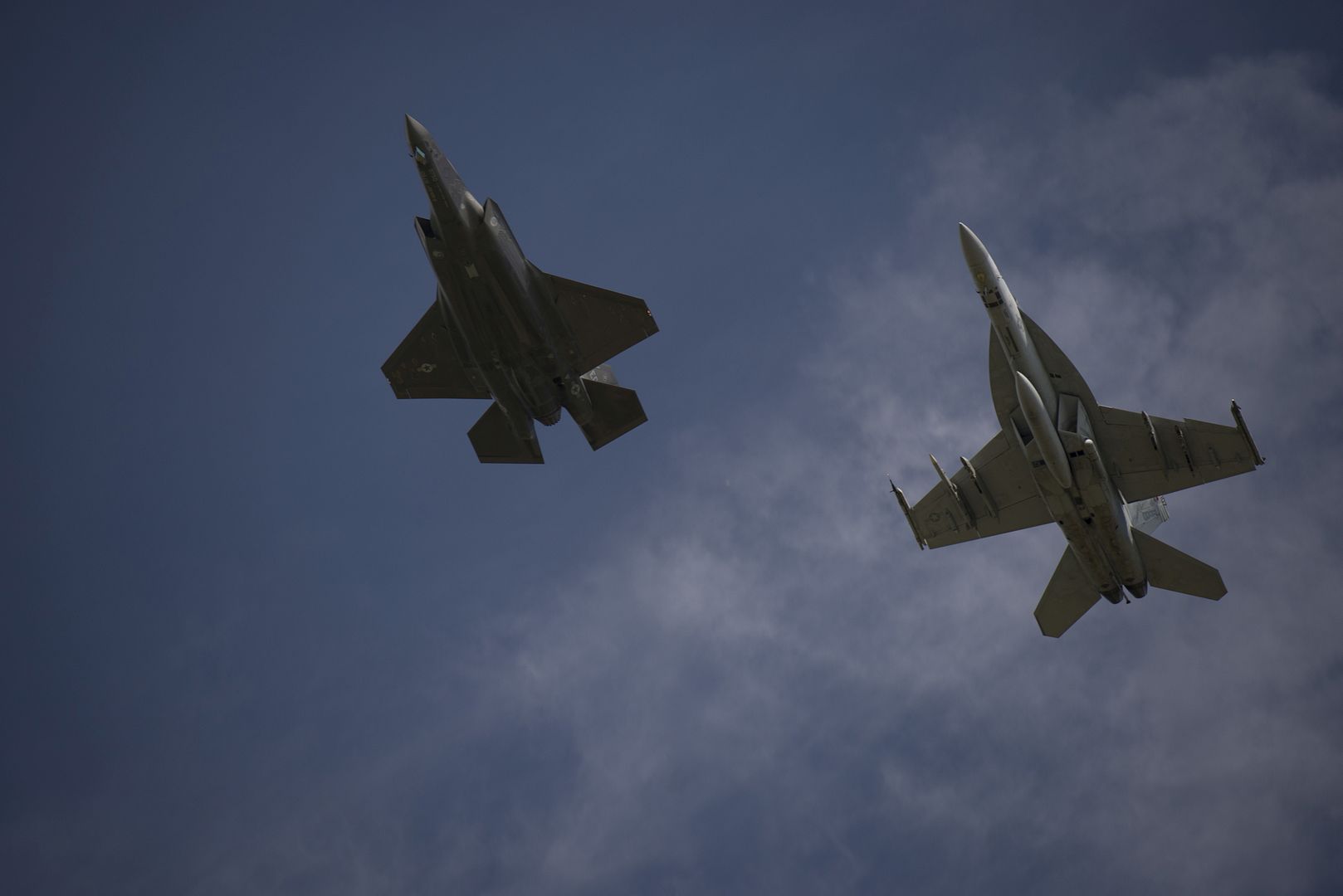
An 11th Strike Fighter Squadron FA-18F Super Hornet taxis down the flightline at Volk Field, Wis. Aug. 22, 2016, during Northern Lightning. Northern Lightning is a tactical-level, joint training exercise that emphasizes fifth and fourth generation assets engaged in a contested, degraded environment. (U.S. Air Force photo by Senior Airman Stormy Archer)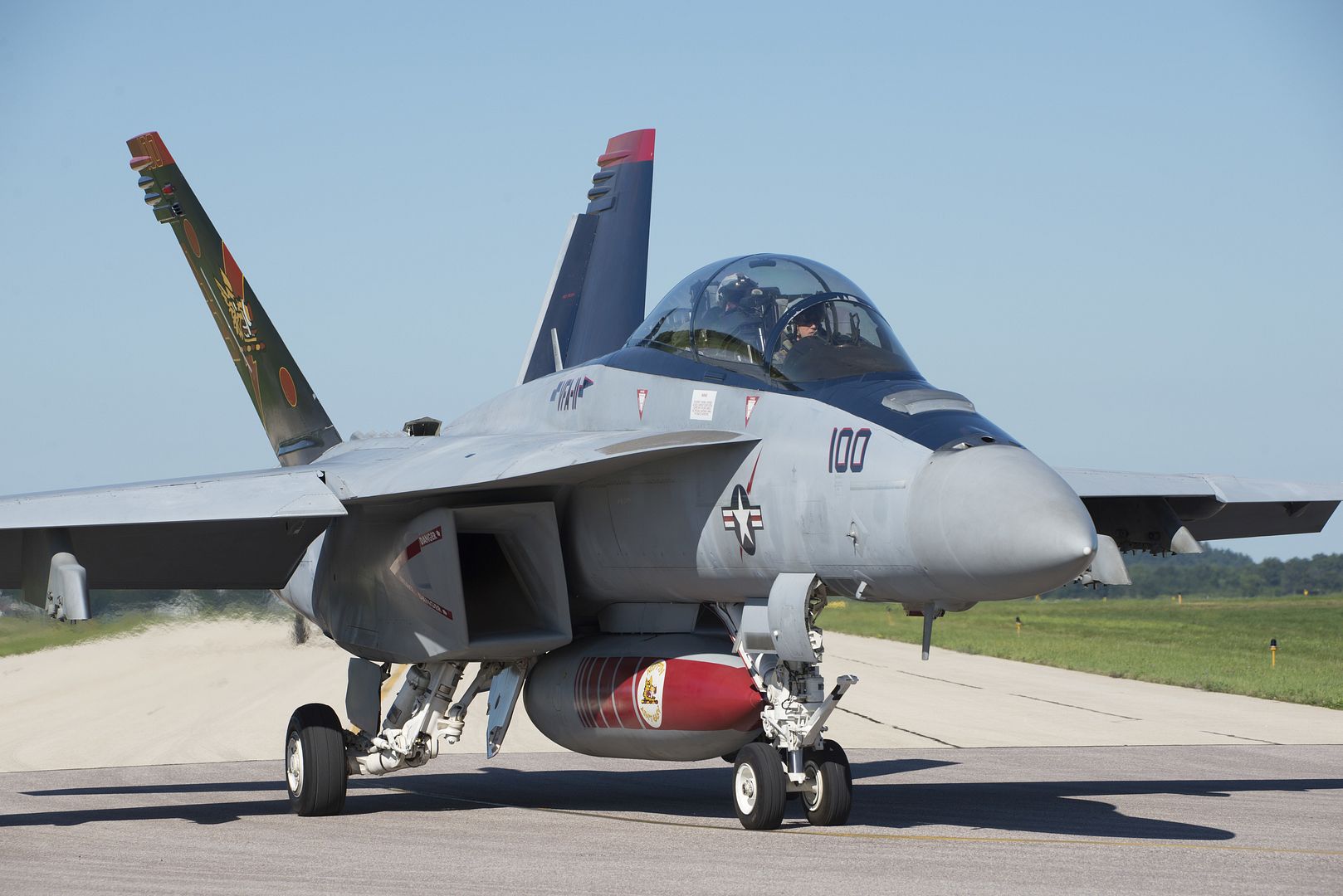
A 132nd Electronic Attack Squadron EA-18 Growler lands at Volk Field, Wis. Aug. 22, 2016, during Northern Lightning. Northern Lightning is a tactical-level, joint training exercise that emphasizes fifth and fourth generation assets engaged in a contested, degraded environment. (U.S. Air Force photo by Senior Airman Stormy Archer)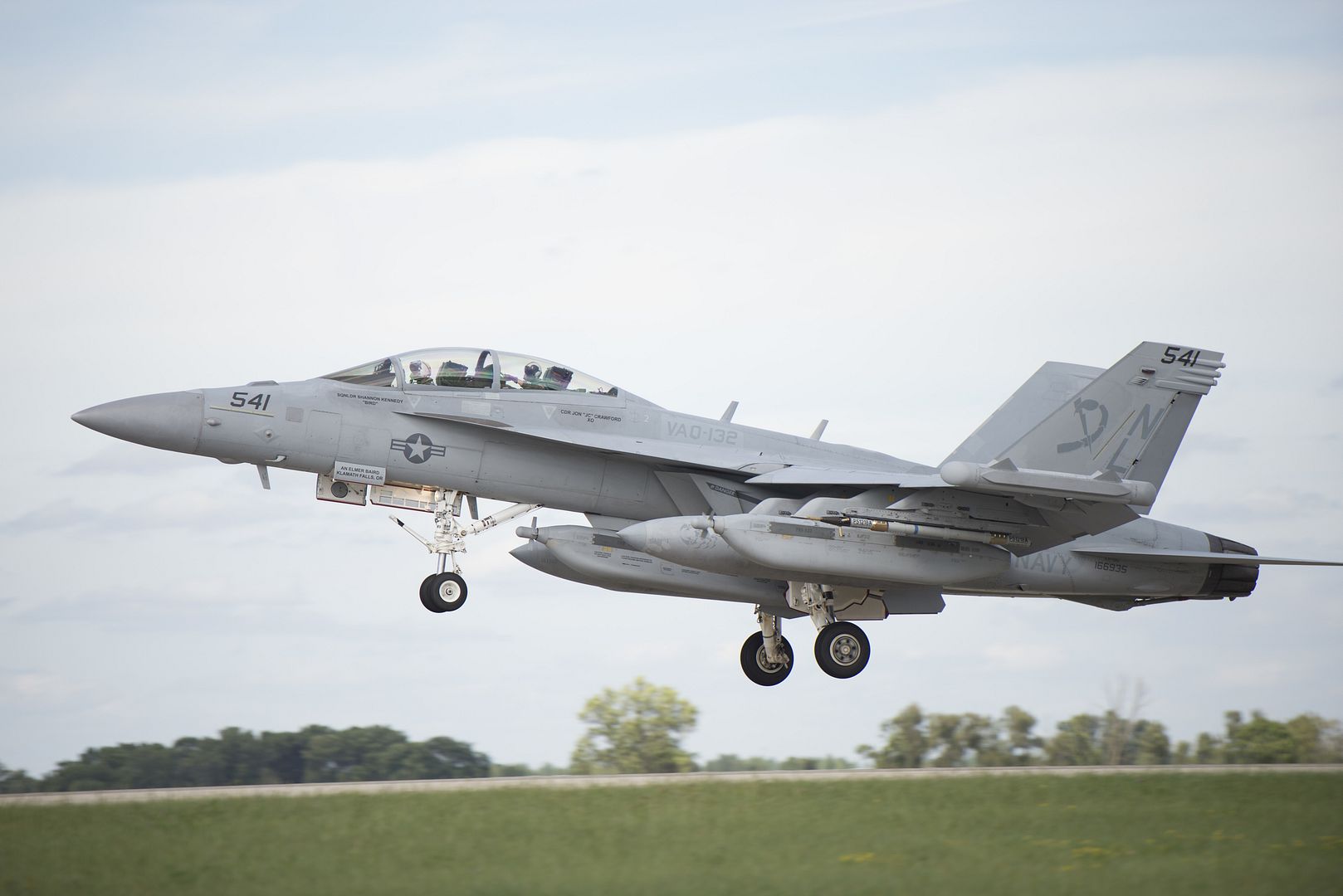
33rd Fighter Wing F-35As taxi down the flightline at Volk Field, Wis. during Northern Lightning Aug. 22, 2016. Northern Lightning is a tactical-level, joint training exercise that emphasizes fifth and fourth generation assets engaged in a contested, degraded environment. (U.S. Air Force photo by Senior Airman Stormy Archer)
A 33rd Fighter Wing F-35A takes off from Volk Field, Wis. Aug. 22, 2016, during Northern Lightning. Northern Lightning is a tactical-level, joint training exercise that emphasizes fifth and fourth generation assets engaged in a contested, degraded environment. (U.S. Air Force photo by Senior Airman Stormy Archer)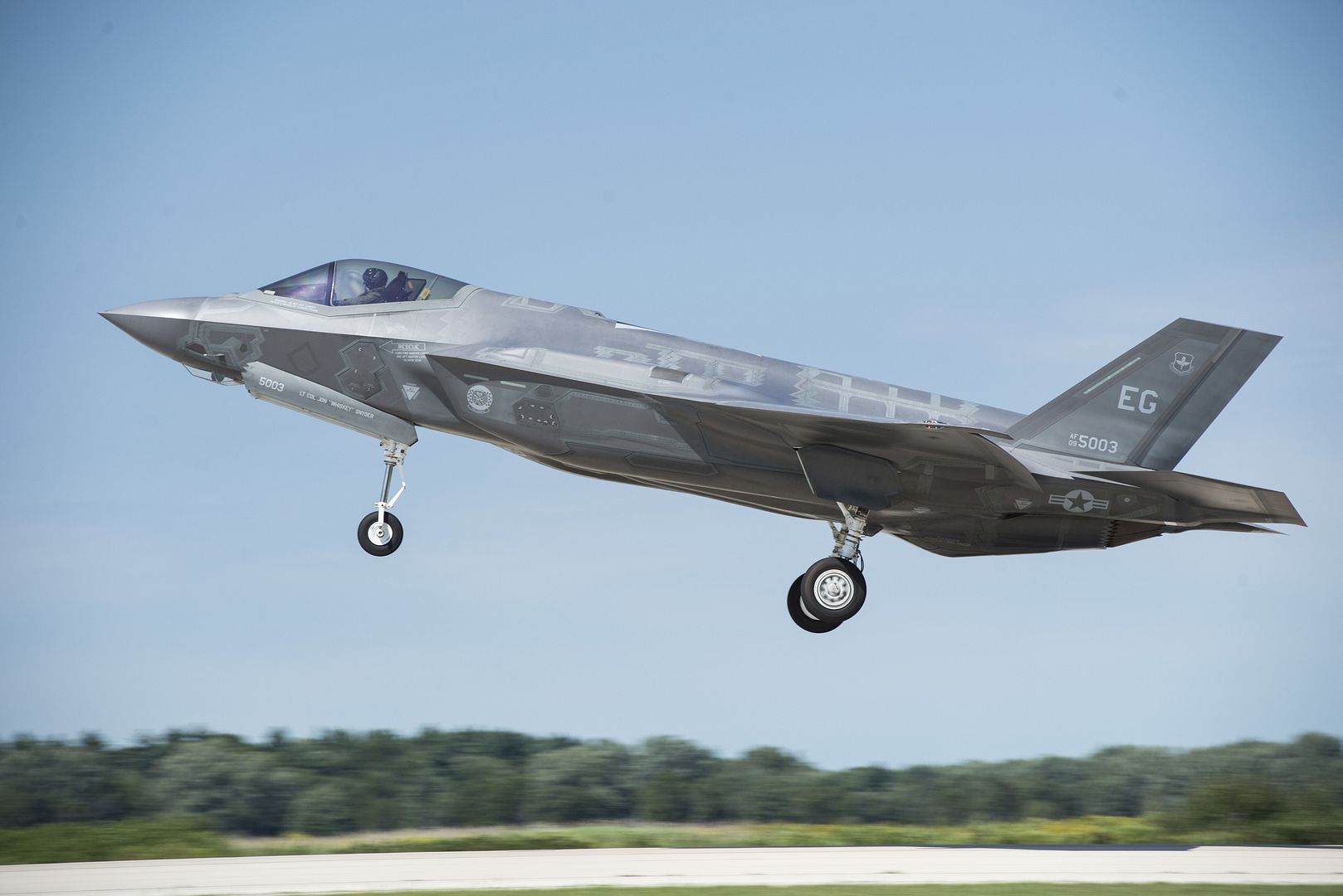
A400M carries out sand strip landing tests
-
 Main AdminPHILIPPINE SEA (Aug. 24, 2016) An MV-22 Osprey, assigned to the Flying Tigers of Marine Medium Tiltrotor Squadron (VMM) 262, approaches amphibious assault ship USS Bonhomme Richard (LHD 6) for a landing during flight operations. Bonhomme Richard, flagship of the Bonhomme Richard Expeditionary Strike Group, is operating in the U.S. 7th Fleet area of operations in support of security and stability in the Indo-Asia-Pacific region. (U.S. Navy photo by Mass Communication Specialist 2nd Class Diana Quinlan/Released)
Main AdminPHILIPPINE SEA (Aug. 24, 2016) An MV-22 Osprey, assigned to the Flying Tigers of Marine Medium Tiltrotor Squadron (VMM) 262, approaches amphibious assault ship USS Bonhomme Richard (LHD 6) for a landing during flight operations. Bonhomme Richard, flagship of the Bonhomme Richard Expeditionary Strike Group, is operating in the U.S. 7th Fleet area of operations in support of security and stability in the Indo-Asia-Pacific region. (U.S. Navy photo by Mass Communication Specialist 2nd Class Diana Quinlan/Released)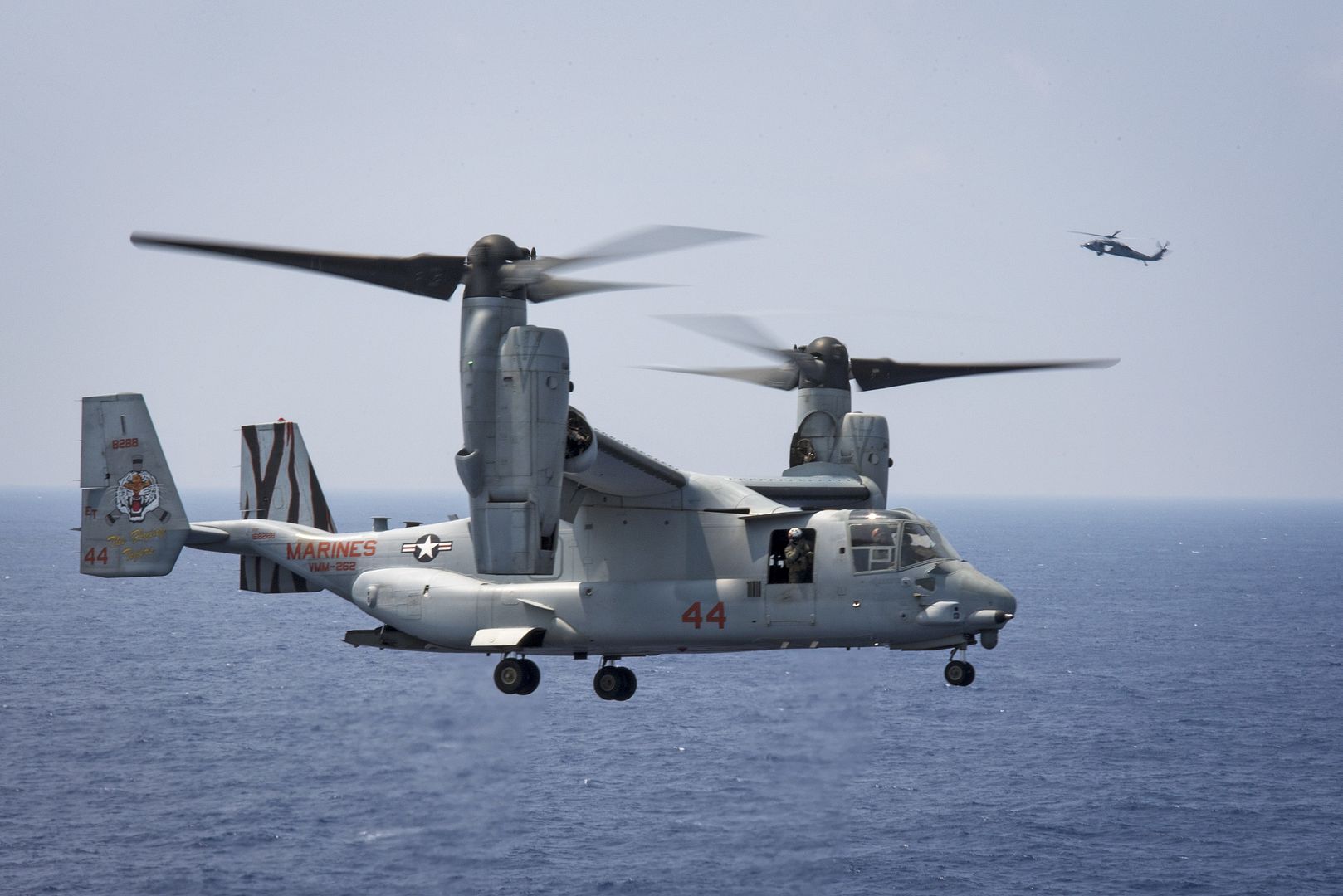
ARABIAN GULF (Aug. 24, 2016) An aircrew member assigned to the Dusty Dogs of Helicopter Sea Combat Squadron (HSC) 7 guides a litter with search and rescue swimmers during an exercise. Ike and its Carrier Strike Group are deployed in support of Operation Inherent Resolve, maritime security operations and theater security cooperation efforts in the U.S. 5th Fleet area of operations. (U.S. Navy photo by Mass Communication Specialist 3rd Class Casey J. Hopkins)
EDWARDS AIR FORCE BASE, Calif. --
The F-35 Integrated Test Force here recently completed 25 missions comprised of 12 Weapons Delivery Accuracy and 13 weapon separation tests as part of a month-long weapons firing test surge.
Historically, WDAs take place once a month given the myriad of coordination required. The highest number previously accomplished in a month was three in November of 2014 during block 2B software testing.
Maj. Charles Trickey, interim director of operations for the 461st Flight Test Squadron, flew the final mission of the surge Aug. 17. The mission was completed at White Sands, where the F-35s shot two AMRAAMS at a QF-4 Drone.
?Some of these WDAs were particularly challenging events,? Trickey said. He said the final mission was actually the fourth attempt to complete this test.
?It was really cool to see the satisfaction of the team, and to get that feeling of accomplishment after doing something that challenging.?
All told, the ITF deployed 30 weapons in 31 days, which included 12 WDAs, and 13 separations, according to Trickey.
?30 separations in 31 days; that?s never been done before in flight test,? said Capt. Brett Tillman, a flight test engineer with the 461st. ?The fact that we could get everything together to do that number of separations in that few days is pretty amazing.?
These successful test events ? performed using the F-35?s newest block 3F software ? demonstrated the accuracy of the aircraft. Five of the test events featured dropping multiple weapons.
The effort for this surge wasn?t limited to the F-35 Test Team. There were a number of units outside the ITF that put in extra effort and time to make the surge successful, including Edwards airfield operations, Edwards tanker operations, the 416th Flight Test Squadron and the F-35 Joint Program Office.
The F-35 weapons test team was given exclusive use of the Sea Test Range, an instrumented Pacific Ocean test area off the central coast near Point Mugu Naval Air Station, California. Tests were also conducted at the U.S. Navy?s China Lake Weapons Range, California and the White Sands Missile Range, New Mexico.
?The amount of coordination and teamwork from the ITF and the outside organizations to enable this is unprecedented,? Tillman said. ?The work these team members put in is amazing. It couldn?t have been done without them.
During this unprecedented surge period, a total of 30 weapons were dropped or fired, including the Joint Direct Attack Munition, AIM-120 Advanced Medium Range Air-to-Air Missile, GPS-guided 250-pound Small Diameter Bomb, AIM-9X Sidewinder air-to-air heat-seeking missile and GPS/laser-guided munition.
?The WDAs rely on the full capability of the F-35 ? multiple sensors, navigation, weapons envelope, mission planning, data links and inter-agency range scheduling ? all working in sequence to put steel on target,? said Lt. Gen. Chris Bogdan, F-35 Program Executive Officer. ?This was a tremendous effort by the F-35 test team. They surged and worked seven days a week for more than a month to expend 30 ordnance and advanced weapons testing. This testing has moved us that much closer to delivering the full F-35 capability to warfighters within the next two years.?
?This is a testament to how the program is maturing with all the weapons we were able to deliver in such a short time.? Trickey said. ?This is going to be huge for the warfighter, and us getting this accomplished is going to help get the jet out on the street a little faster and with more capability.?
The F-35 is a multi-role, next-generation fighter that combines advanced stealth with speed, agility and a 360-degree view of the battlespace. The F-35 will form the backbone of air combat superiority for decades to come and replace legacy tactical fighter fleets with dominant air-to-air and air-to-ground capabilities to deter and defeat potential adversaries.
The U.S. Marine Corps declared the F-35B combat-ready, or Initial Operating Capability, in July 2015, the U.S. Air Force declared F-35A IOC on Aug. 2, 2016 and the U.S. Navy intends to attain F-35C IOC in 2018. More than 200 F-35s have flown in excess of 66,000 fleet-wide hours, with over 300 F-35 pilots and 3,000 maintainers trained to operate and support this next-generation aircraft.
Test pilot Scott McLaren launches and AIM-9X air-to-air missile during weapons surge testing. The recent surge included many firsts, including the first air-to-air kill of a drone for the F-35. (Photo by Jonathon Case/Lockheed Martin)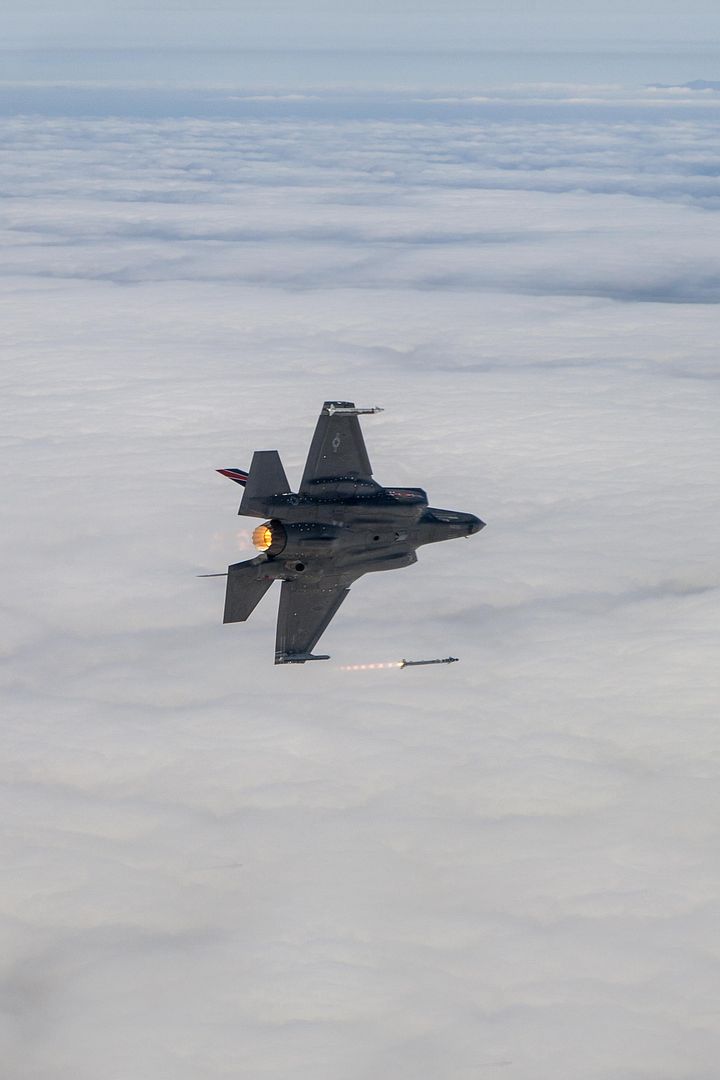
Maj. Douglas Rosenstock fires an AIM-120 missile from an F-35 during a recent weapons test surge here. By the end of the surge the F-35 Integrated Test Team released 30 weapons in 31 days, a first in flight test. (Photo by Darrin Russel/Lockheed Martin)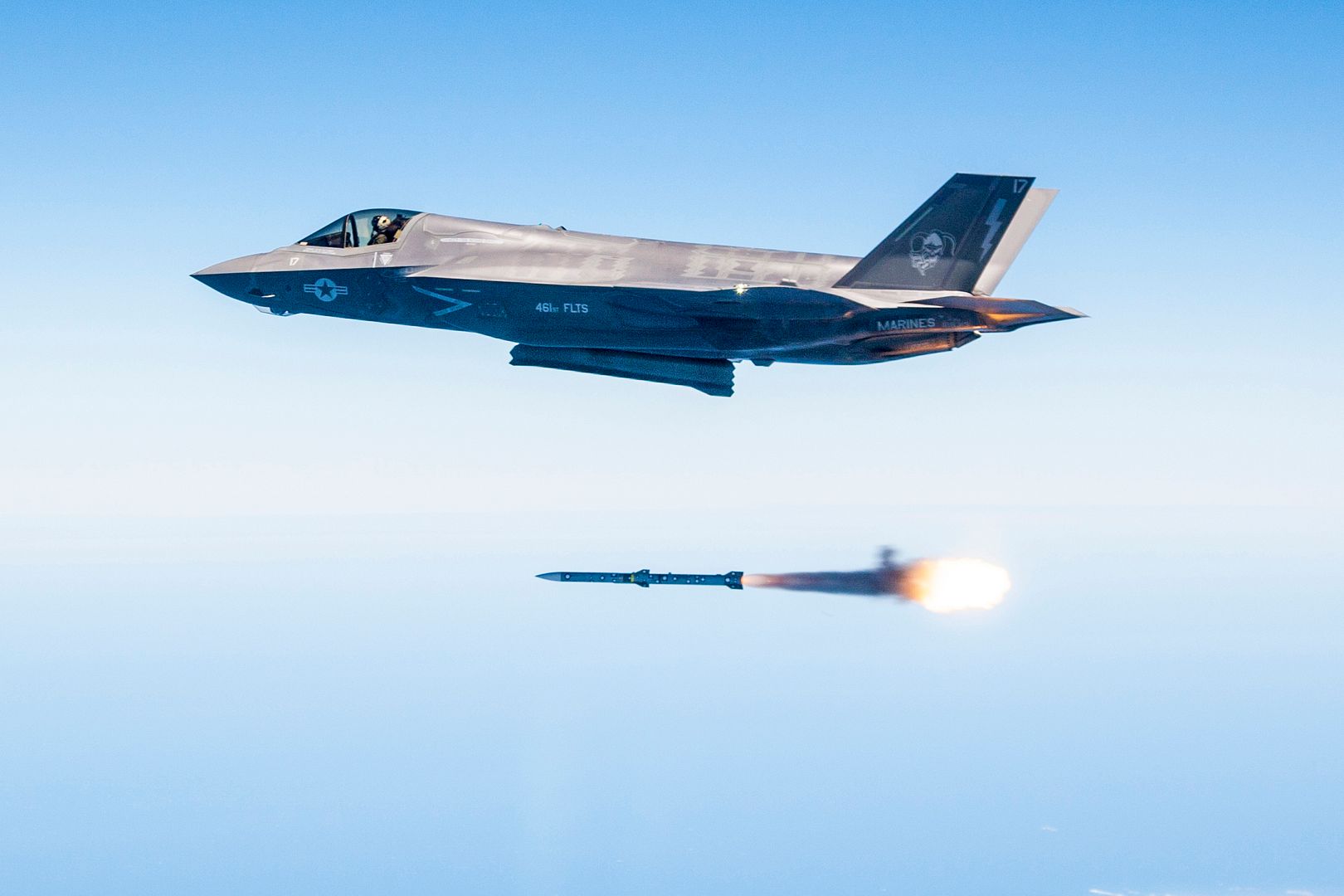
MARIETTA, Georgia, Aug. 25, 2016 ? The U.S. Marine Corps accepted delivery of its 50th KC-130J Super Hercules aerial refueler at the Lockheed Martin (NYSE: LMT) facility here on Aug. 18. This KC-130J is assigned to Marine Corps Air Station Miramar, California. The Marine Corps has the distinction of operating the largest KC-130J fleet in the world.
As a member of the proven C-130J Super Hercules family, the KC-130J is battle-tested and delivers unmatched tanking capabilities ? delivering fuel to a multitude of platforms, from helicopters to the F-35B Lightning II, the world?s most advanced 5th generation multirole fighter.
?The U.S. Marine Corps is one of the most visible KC-130J operators in the world, providing vital support where it?s needed most,? said George Shultz, vice president and general manager, Air Mobility & Maritime Missions at Lockheed Martin. ?We value our partnership with the Marine Corps and know that much of the success of the KC-130J platform is due to the multiple missions carried out by Marine crews on this aircraft. Congratulations to the U.S. Marine Corps on delivery of this milestone KC-130J!?
The KC-130J aerial refueling tanker is the latest in a long lineage of combat proven KC-130 Hercules aerial refueler technologies. The new KC-130J builds on proven aerial refueler designs while taking full advantage of tremendous technological and performance improvements inherent in the basic C-130J aircraft. Several international operators also fly the KC-130J.
The C-130J Super Hercules is the proven standard in tactical airlift, providing a unique mix of versatility and performance to complete any mission, anytime, anywhere. The Super Hercules worldwide fleet has more than 1.3 million flight hours to its credit and is flown by 19 different operators.
26 August 2016 Press Release
The first A350 XWB for China Airlines (CAL) has rolled out from cabin furnishing & engine installation at the Airbus Toulouse Final Assembly Line. The aircraft is now ready to proceed to further ground and flight testing. This first A350-900 for CAL is scheduled for delivery in Q3 2016.
China Airlines has 14 A350-900 on order. The aircraft is expected to be deployed on the carrier's long-haul routes to Europe and on selected regional routes. The A350-900 will join China Airlines' other Airbus fleet including A330s and A340s on its regional and long haul services.
The A350 XWB is the world?s latest generation airliner and the newest member of Airbus? modern, comfortable & efficient widebody product family. It features the latest aerodynamic design, carbon fiber fuselage and wings, plus new fuel-efficient Rolls-Royce Trent XWB engines. Together, these latest technologies translate into unrivalled levels of operational efficiency, with a 25 per cent reduction in fuel burn and emissions, and significantly lower maintenance costs.
To date, Airbus has recorded a total of 810 firm orders for the A350 XWB from 43 customers worldwide, already making it one of the most successful widebody aircraft ever.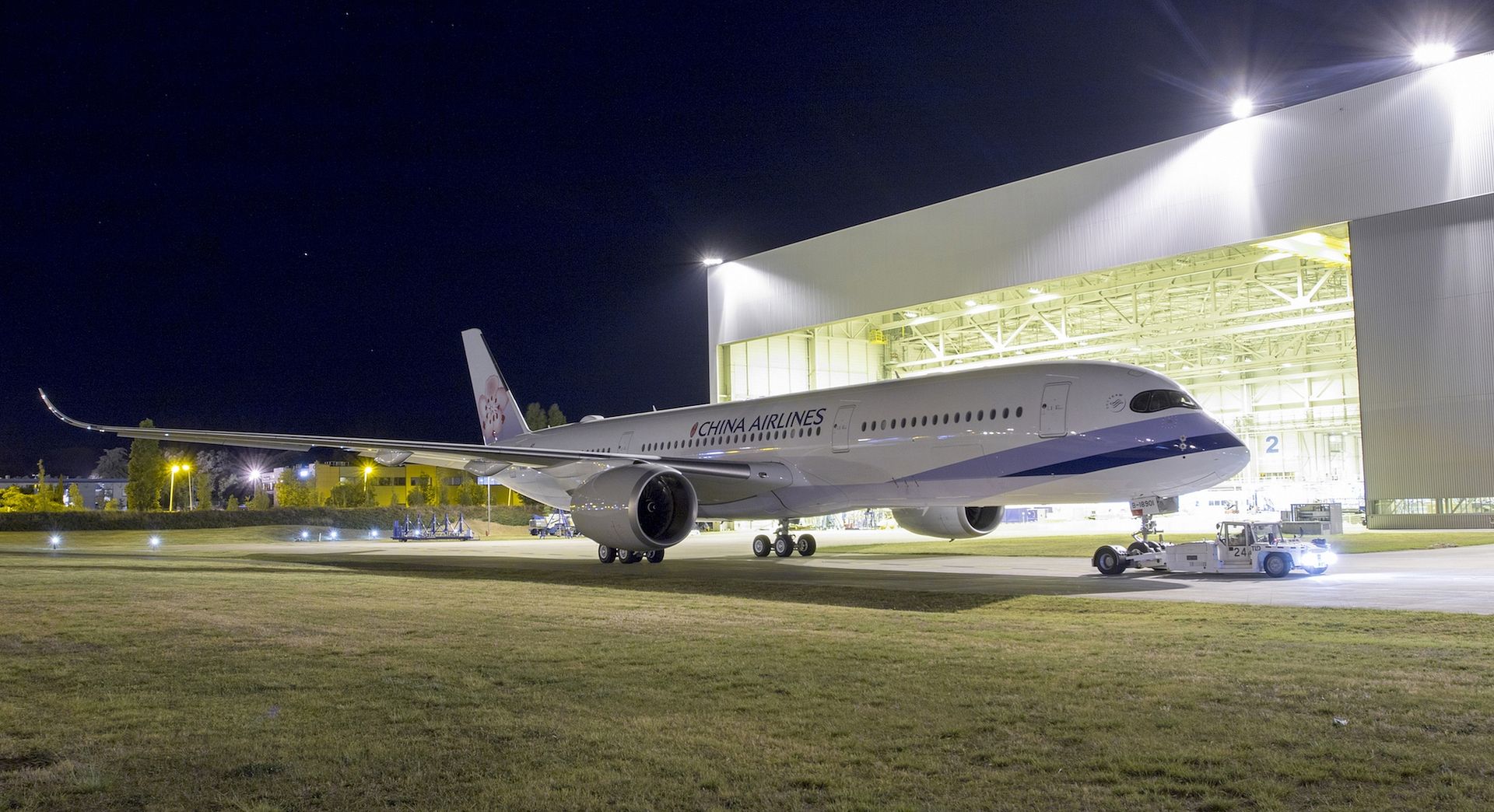
-
 Main AdminSenior Airman Jarvis Samuels, 33rd Aircraft Maintenance Squadron assistant dedicated crew chief, prepares to launch an F-35A during exercise Northern Lightning Aug. 26, 2016, at Volk Field, Wis. Northern Lightning is a joint total force exercise between the Air National Guard, Air Force and Navy conducting offensive counter air, suppression and destruction of enemy air defense and close air support. (U.S. Air Force photo by Senior Airman Stormy Archer)
Main AdminSenior Airman Jarvis Samuels, 33rd Aircraft Maintenance Squadron assistant dedicated crew chief, prepares to launch an F-35A during exercise Northern Lightning Aug. 26, 2016, at Volk Field, Wis. Northern Lightning is a joint total force exercise between the Air National Guard, Air Force and Navy conducting offensive counter air, suppression and destruction of enemy air defense and close air support. (U.S. Air Force photo by Senior Airman Stormy Archer)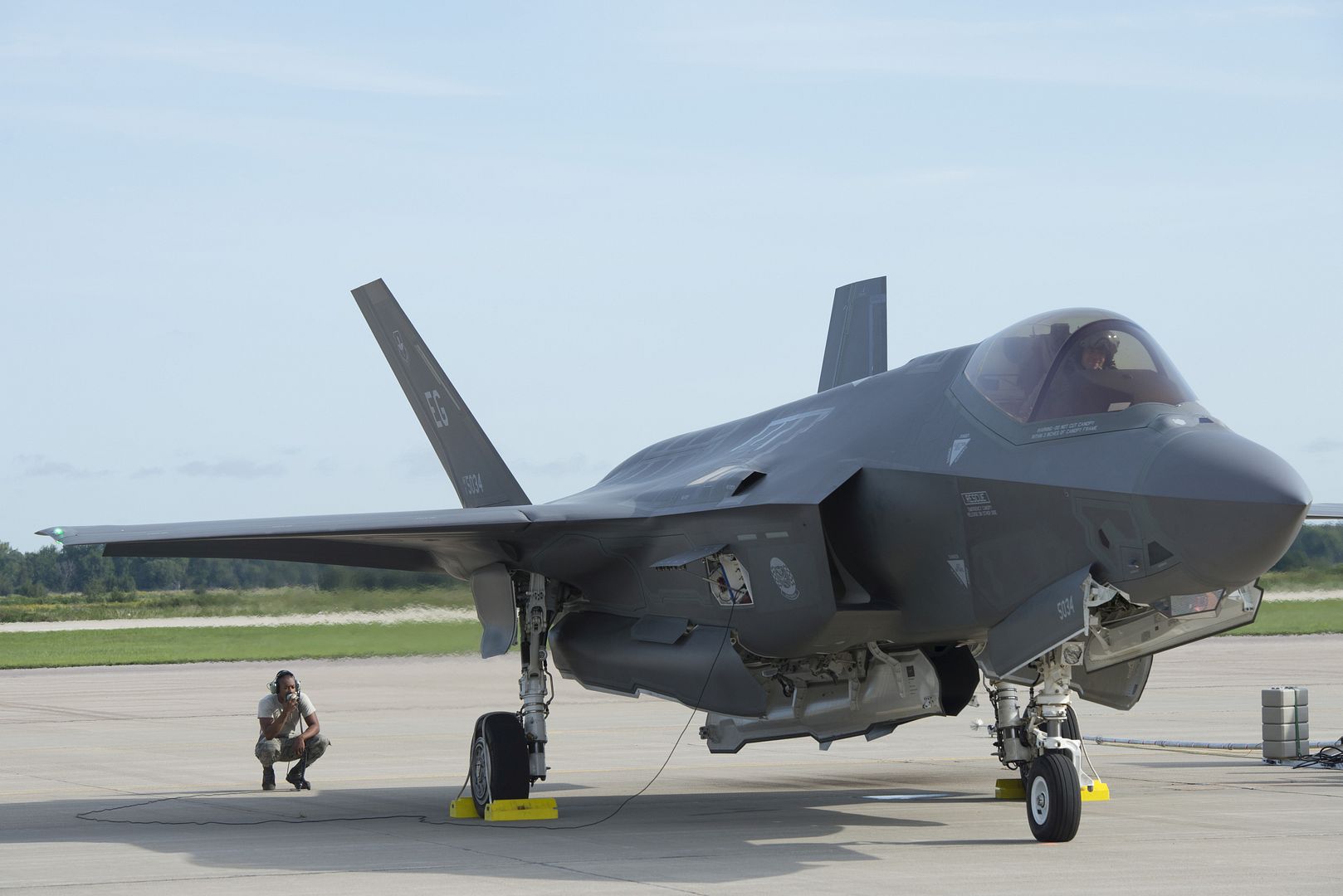
Senior Airman Kolby Burton, 33rd Aircraft Maintenance Squadron weapons load crew member, salutes Maj. Jeff Osborne, 33rd Fighter Wing F-35A pilot, during exercise Northern Lightning Aug. 26, 2016, at Volk Field, Wis. Northern Lightning is a joint total force exercise between the Air National Guard, Air Force and Navy conducting offensive counter air, suppression and destruction of enemy air defense and close air support. (U.S. Air Force photo by Senior Airman Stormy Archer)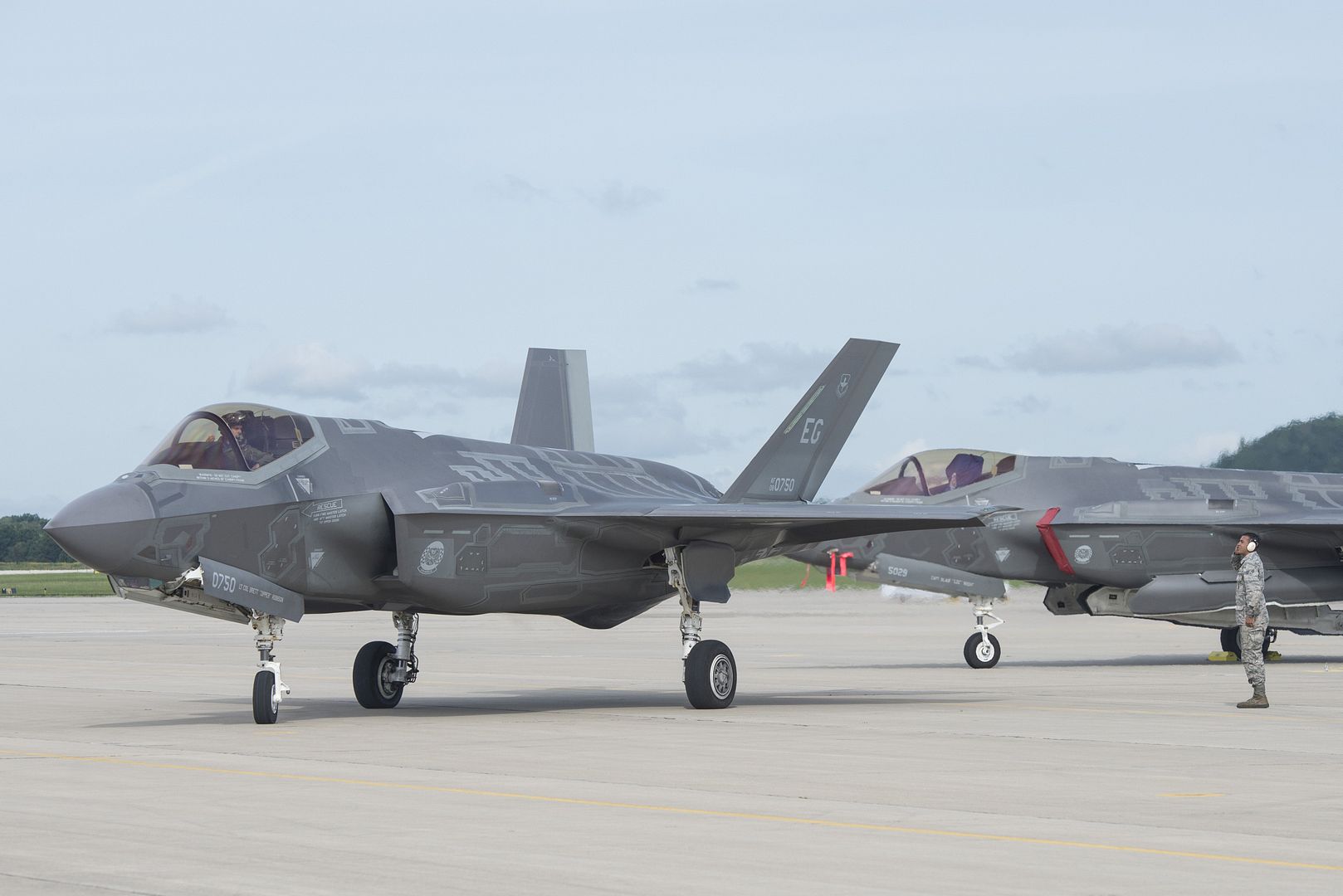
ABOARD USS BONHOMME RICHARD (LHD-6), At Sea, (Aug. 26, 2016) ? An MV-22B Osprey with Marine Medium Tiltrotor Squadron 262 (Reinforced), idles atop the flight-deck of the USS Bonhomme Richard (LHD-6), as a separate MV-22B approaches to land during night qualifications at sea, Aug. 26, 2016.
The 31st MEU is the Marine Corps? only continuously forward-deployed Marine Air-Ground Task Force, and combines air-ground-logistics into a single team capable of addressing a range of military operations in the Asia-Pacific region ? from force projection and maritime security to humanitarian assistance and disaster relief in cooperation with host countries and partner militaries. (U.S. Marine Corps Photo by Staff Sgt. T.T. Parish/Released)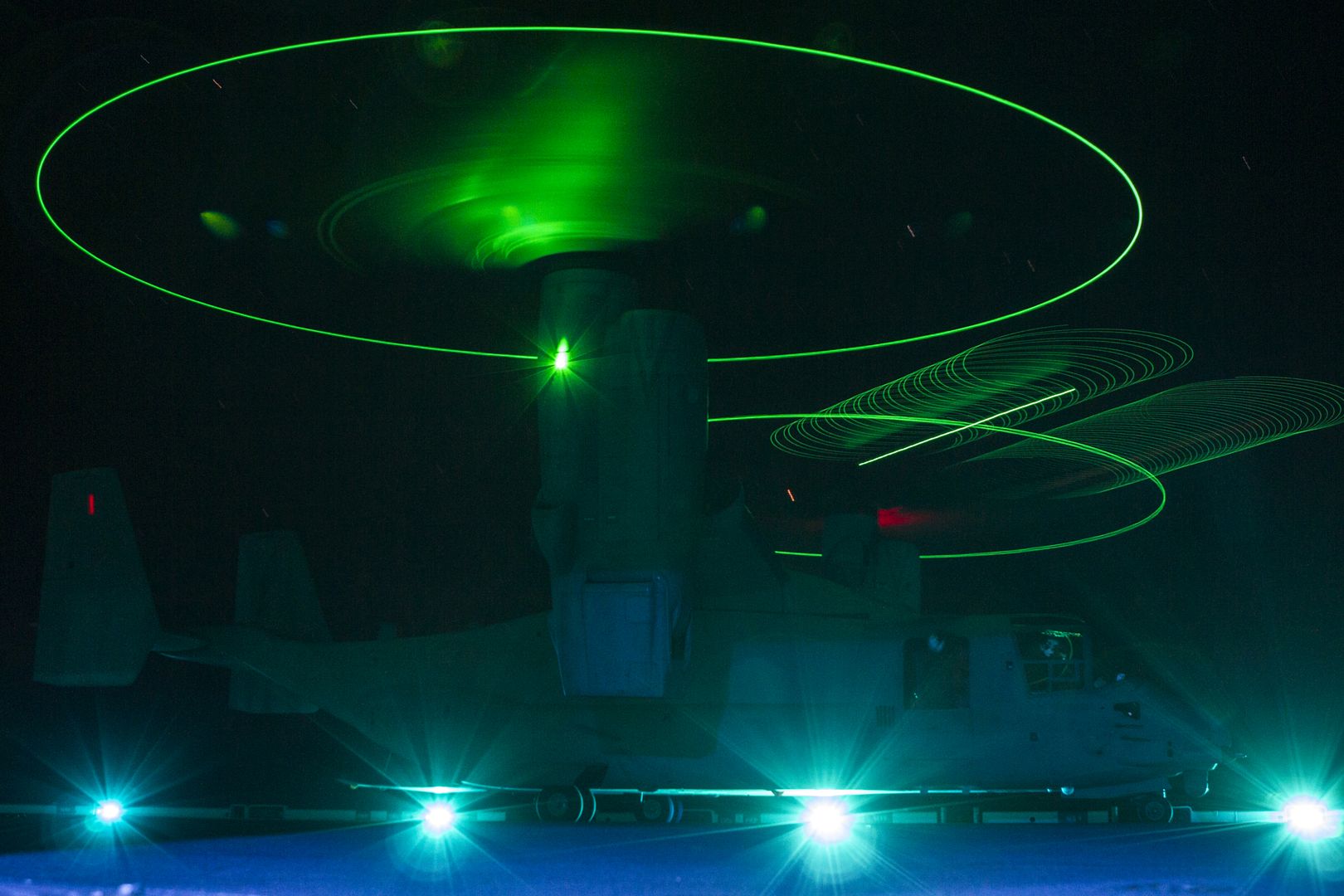
ABOARD USS BONHOMME RICHARD (LHD-6), At Sea, (Aug. 27, 2016) ? U.S. Navy flight deck aircraft controllers signal an AV-8B Harrier pilot during flight operations at sea aboard the USS Bonhomme Richard (LHD-6), while underway as part of the 31st MEU and BHR Expeditionary Strike Group, Aug. 27, 2016.
The AV-8B belongs to Marine Medium Tiltrotor Squadron 262 (Reinforced), the Aviation Combat Element for the 31st MEU.
Harriers ? short take-off, vertical landing aircraft ? are an integral asset to the 31st MEU for their multifaceted capabilities, including air-to-ground attack support and air-to-air engagement.
The 31st MEU is the Marine Corps? only continuously forward-deployed Marine Air-Ground Task Force, and combines air-ground-logistics into a single team capable of addressing a range of military operations in the Asia-Pacific region ? from force projection and maritime security to humanitarian assistance and disaster relief in cooperation with host countries and partner militaries. (U.S. Marine Corps Photo by Staff Sgt. T.T. Parish/Released)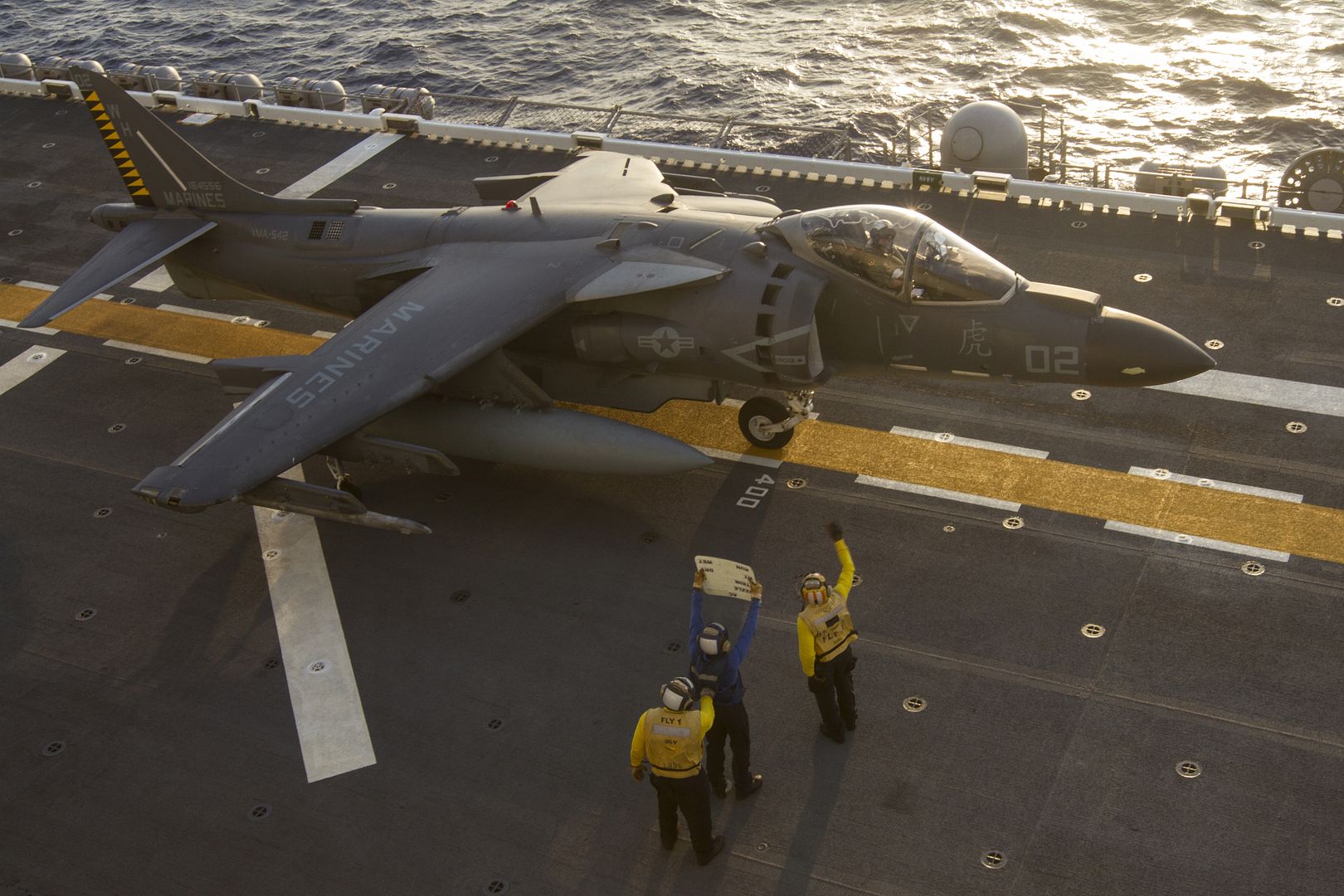
ABOARD USS BONHOMME RICHARD (LHD-6), At Sea (Aug. 27, 2016) ? A Marine Corps AV-8B Harrier jet with Marine Medium Tiltrotor Squadron 262 (Reinforced), 31st Marine Expeditionary Unit, prepares for takeoff during flight operations aboard the USS Bonhomme Richard (LHD-6), Aug. 27, 2016. The 31st MEU is the Marine Corps? only continuously forward-deployed Marine Air-Ground Task Force, and combines air-ground-logistics into a single team capable of addressing a range of military operations in the Asia-Pacific region, from force projection and maritime security to humanitarian assistance and disaster relief. (U. S. Marine Corps photo by Sgt. Tiffany Edwards/released)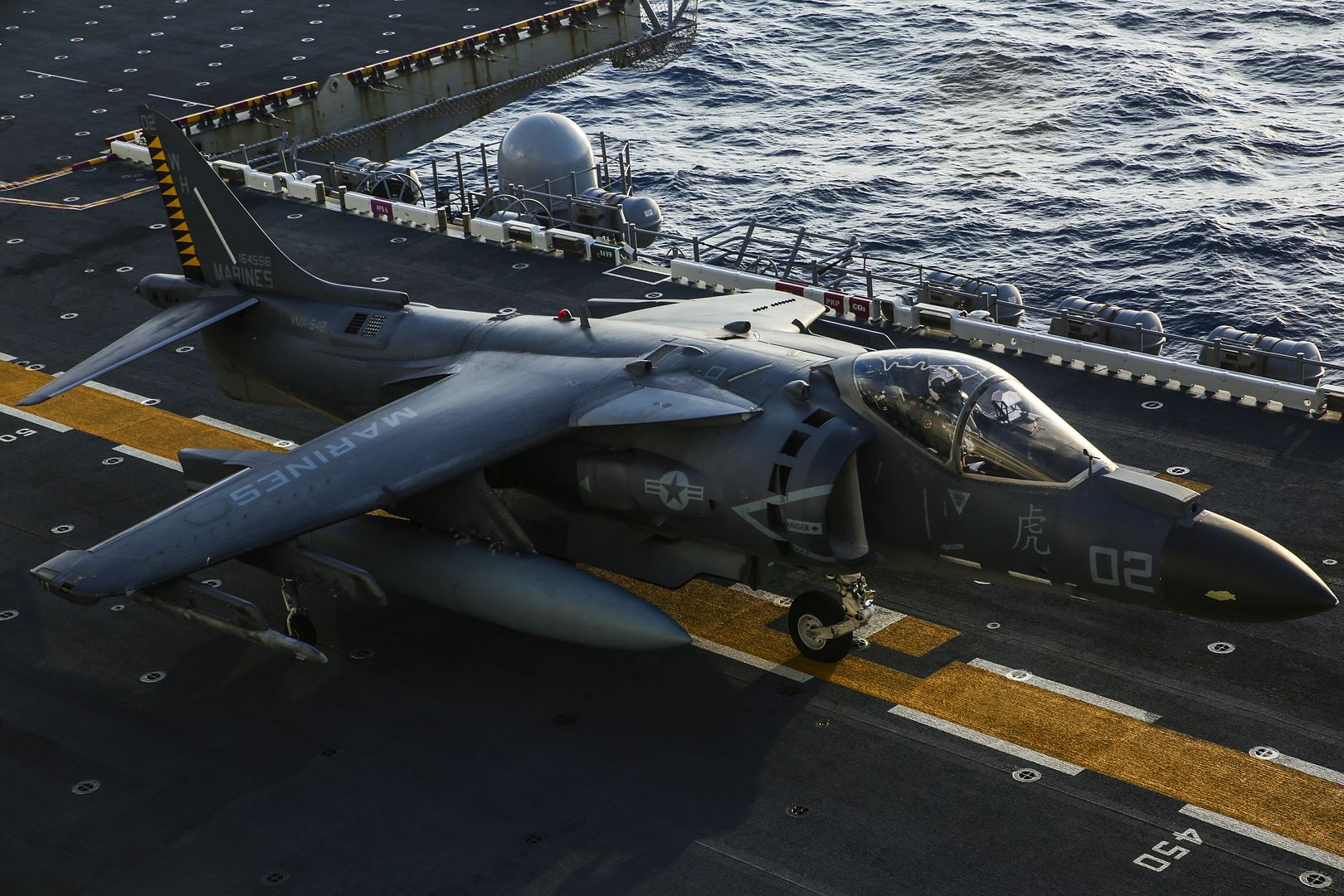
Luke Air Force Base --
The F-35 program took a major step forward recently with the announcement of initial operational capability and another huge step was made at Luke Air Force Base today when the Air Force?s 100th F-35 Lightning II, designated AF-100, arrived here.
?This marks a milestone and shows the fact that the F-35 program has continued to grow, progress and support initial operational capability,? said Brig. Gen. Brook Leonard, 56th Fighter Wing commander. ?It is also a ?scare factor? for our enemies that we are able to produce such an incredible platform at such a high production rate and that it?s getting out in the field in larger and larger numbers.?
Luke Air Force Base received its first F-35 in March 2014 and developed the training and tactics for the program. The fleet has since grown to more than 40 F-35s at Luke, including those of partner nations such as Australia and Norway, and recently activated its third F-35 unit ? the 63rd Fighter Squadron.
?A lot of people put the blood, sweat and tears into making sure we could have an agreement with the community that would allow us to train and continue to produce the future of airpower,? Leonard said. ?Standing up the third squadron marks the halfway point as we grow up to six squadrons. It also comes with the heritage of the 63rd, which is incredible, and to be able to see that take new form in the shape of a Lightning aircraft is phenomenal.?
From the first training sortie on May 5, 2014, to the arrival of the first partner-nation F-35 on December 18, 2014, and more recently beginning its first-ever F-35 Mission-Ready Airmen training class for maintainers, Luke is no stranger to F-35 milestones.
?Last year we began U.S. Air Force and partner pilot training at Luke AFB in Arizona, where a blend of U.S. and partner instructor pilots are helping to train U.S. Air Force and other partner pilots,? said Lt. Gen. Christopher Bogdan, F-35 Joint Program Executive Officer, during an April 26 hearing with the Senate Armed Services Committee.
As Luke continues to perfect F-35 training, the Air Force has moved beyond training and announced August 2 that IOC has been accomplished.
?The Air Force is now receiving F-35As at Hill AFB in Utah,? Bogdan said.
With the reception of the 100th F-35, Luke is quickly transitioning to the only active-duty Air Force F-35 training base, providing the world?s greatest F-35 fighter pilots to the new operational squadrons and eventually to combat.
?The F-35 is going to be the backbone of the fighter fleet in the United States Air Force and for our partner nations,? Leonard said. ?There are going to be more F-35s than any other fighter platform, and all that training starts right here at Luke AFB.?
Maj.Matt Strongin, 62nd Fighter Squadron F-35 Lightning II pilot, is met by a 62nd Aircraft Maintenance Unit Airman Aug. 26, 2016, after landing the Air Force's 100th F-35. This milestone comes on the heels of the Air Force's announcement of the F-35's initial operational capability. (U.S. Air Force photo by Tech. Sgt. Luther Mitchell Jr)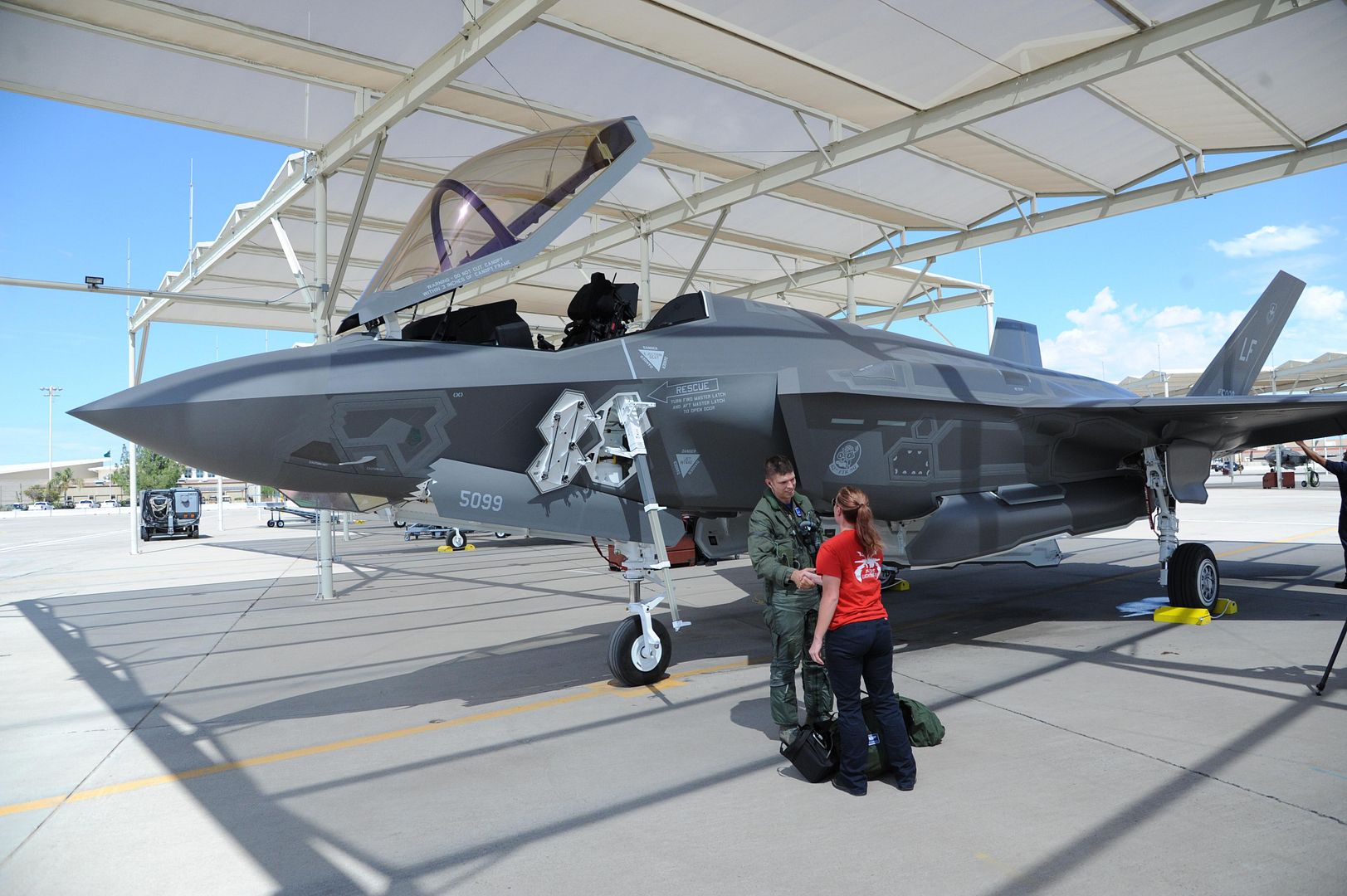
-
 Main AdminARABIAN GULF (Aug. 27, 2016) An F/A-18E Super Hornet assigned to the Gunslingers of Strike Fighter Squadron (VFA) 105 prepares to launch from the flight deck of the aircraft carrier USS Dwight D. Eisenhower (CVN 69) (Ike). Ike and its Carrier Strike Group are deployed in support of Operation Inherent Resolve, maritime security operations and theater security cooperation efforts in the U.S. 5th Fleet area of operations. (U.S. Navy photo by Mass Communication Specialist 3rd Nathan T. Beard)
Main AdminARABIAN GULF (Aug. 27, 2016) An F/A-18E Super Hornet assigned to the Gunslingers of Strike Fighter Squadron (VFA) 105 prepares to launch from the flight deck of the aircraft carrier USS Dwight D. Eisenhower (CVN 69) (Ike). Ike and its Carrier Strike Group are deployed in support of Operation Inherent Resolve, maritime security operations and theater security cooperation efforts in the U.S. 5th Fleet area of operations. (U.S. Navy photo by Mass Communication Specialist 3rd Nathan T. Beard)
ARABIAN GULF (Aug. 27, 2016) An F/A-18E Super Hornet assigned to the Gunslingers of Strike Fighter Squadron (VFA) 105 makes an arrested landing on the flight deck of the aircraft carrier USS Dwight D. Eisenhower (CVN 69) (Ike). Ike and its Carrier Strike Group are deployed in support of Operation Inherent Resolve, maritime security operations and theater security cooperation efforts in the U.S. 5th Fleet area of operations. (U.S. Navy photo by Mass Communication Specialist 3rd Nathan T. Beard)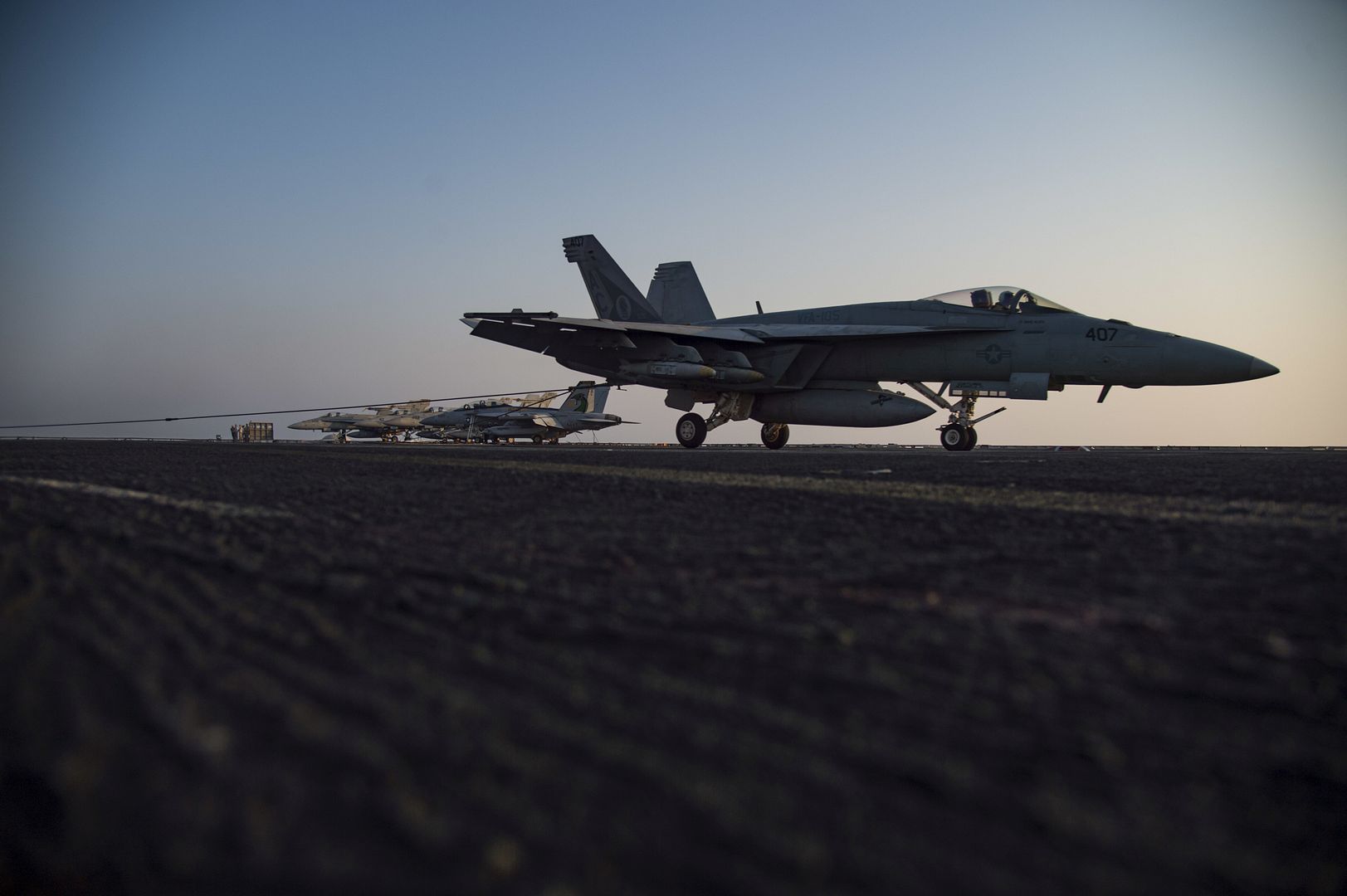
ARABIAN GULF (Aug. 27, 2016) An F/A-18F Super Hornet assigned to the Fighting Swordsmen of Strike Fighter Squadron (VFA) 32 makes an arrested landing on the flight deck of the aircraft carrier USS Dwight D. Eisenhower (CVN 69) (Ike). Ike and its Carrier Strike Group are deployed in support of Operation Inherent Resolve, maritime security operations and theater security cooperation efforts in the U.S. 5th Fleet area of operations. (U.S. Navy photo by Mass Communication Specialist 3rd Nathan T. Beard)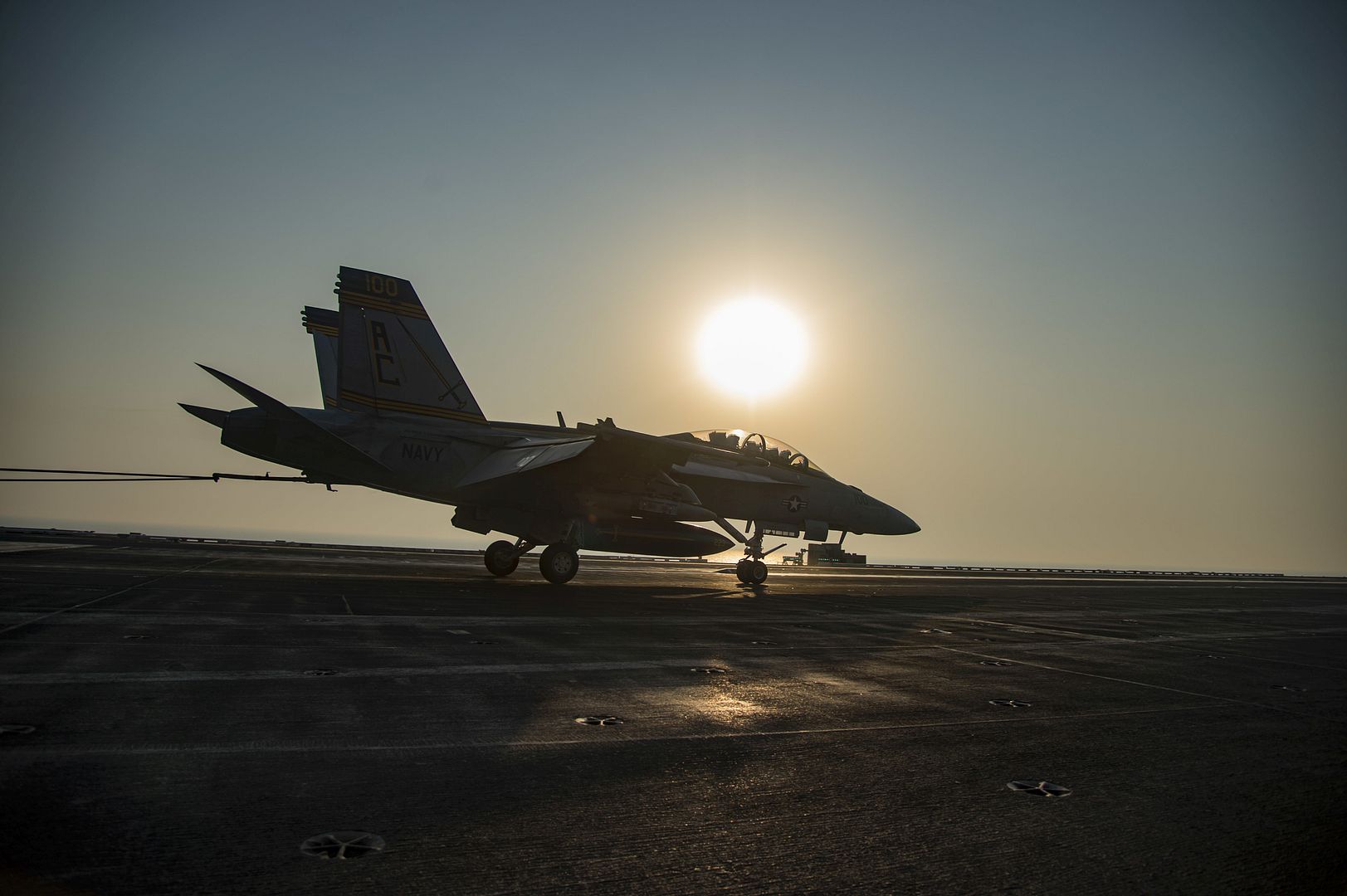
-
 Main AdminPACIFIC OCEAN (Aug. 28, 2016) An AV-8B Harrier II, assigned to 13th Marine Expeditionary Unit (MEU), prepares to land on the flight deck of amphibious assault ship USS Boxer (LHD 4). Boxer, flagship for the Boxer Amphibious Ready Group, 13th MEU team, is operating in the U.S. 3rd Fleet area of operations. (U.S. Navy photo by Mass Communication Specialist Seaman Eric Burgett/Released)
Main AdminPACIFIC OCEAN (Aug. 28, 2016) An AV-8B Harrier II, assigned to 13th Marine Expeditionary Unit (MEU), prepares to land on the flight deck of amphibious assault ship USS Boxer (LHD 4). Boxer, flagship for the Boxer Amphibious Ready Group, 13th MEU team, is operating in the U.S. 3rd Fleet area of operations. (U.S. Navy photo by Mass Communication Specialist Seaman Eric Burgett/Released)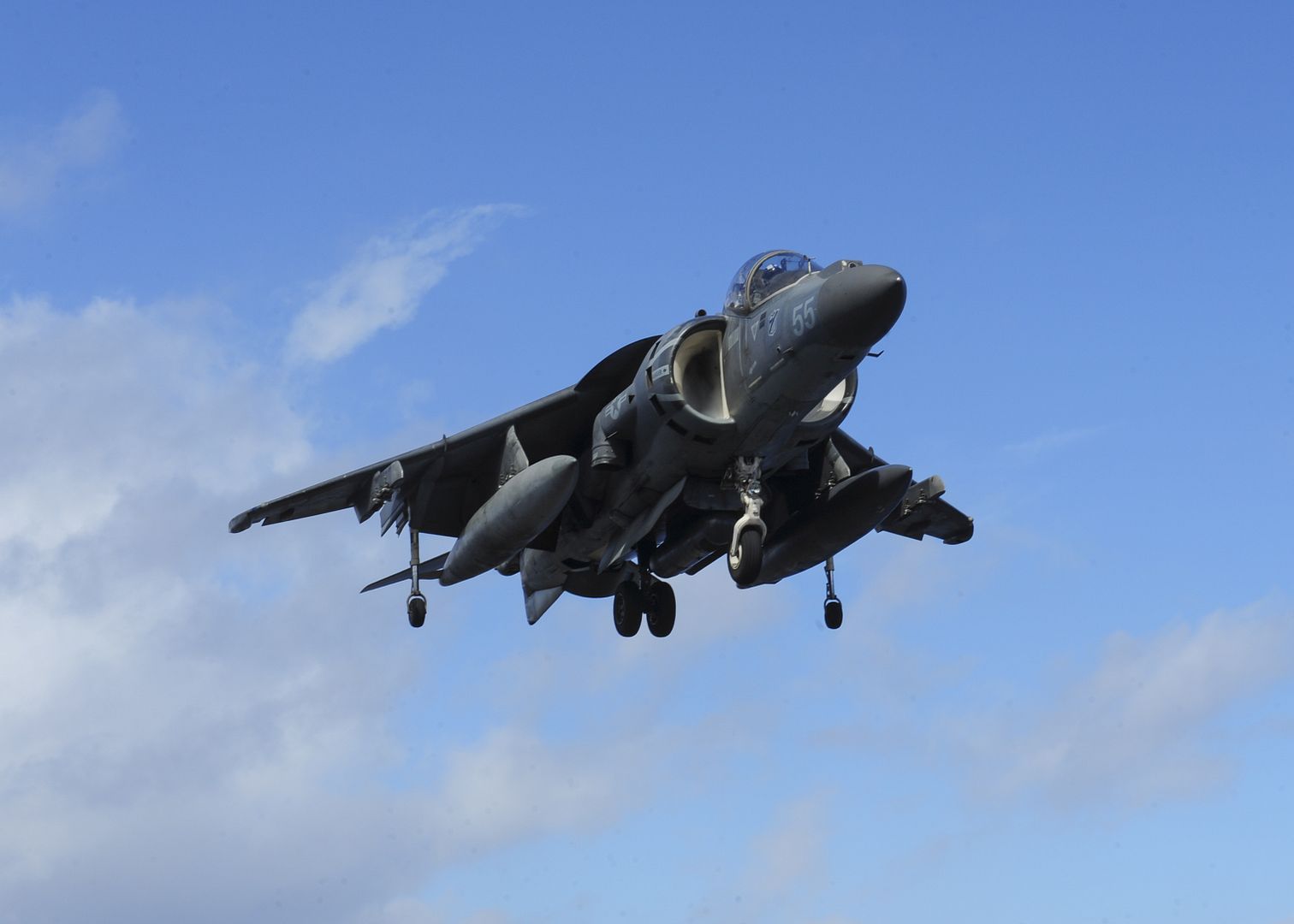
NELLIS AIR FORCE BASE, Nev.- --
Pakistan air force F-16C/D jets from No. 5 Squadron "Falcons" travelled more than 7,700 miles here to participate in Red Flag 16-4 on Aug. 15-26.
This has been a valuable training exercise for both the Pakistan air force and the U.S. Air Force as they continue to build and strengthen the relationship between the two forces.
Red Flag 16-4 has provided the U.S. and Pakistan Air Forces the chance to improve integration, further training and enhance the readiness if air operations.
?The F-16 has been the lynchpin in accomplishing our mutual desired objectives,? said Pakistan Air Vice Marshal Syed Noman Ali, deputy chief of air staff. ?At the strategic level it has been extremely valuable. On the capability enhancement and objective achievement on the ground, this aircraft has been the most useful.?
Pakistan brings a unique set of skills to the table by their willingness to work with others and their motivation to get the most out of the training scenarios.
?For me, it is absolutely phenomenal to have a partner who is willing to do that and looks at this as truly an opportunity to not only get better as a force within the Pakistan air force but also how to better integrate with everyone else,? said Maj. Gen. Rick B. Mattson, chief, Office of the Defense Representative, Pakistan. ?That has been a major focus for the team that has been here and I have already heard about ways they are able to integrate better through technology and we will try to work on that part.?
Not only have the Pakistan pilots been impressing but also their maintenance team as well.
?I have a lot of experience in the Middle East and this is a very unique capability that they have, said Mattson. ?When you go through the maintenance facility, bays, it?s all Pakistan enlisted working on these aircrafts.?
Integration has been a major focus for Red Flag 16-4 and the Pakistan air force has played a key role in helping achieve that goal.
?When you have a force that is that professional and is dedicated to training and working together as a coalition you are going to get better as a group and I think that has been the biggest lesson from this,? said Mattson.
It is exercises like Red Flag 16-4 that have helped build the bond between U.S. and Pakistan Air Force as it allows both nations to get together in a training environment to help learn each other?s strengths and utilizing those strengths in real world situations.
?Whenever we?ve been together with the U.S. in terms of an exercise or other engagements it has been amazing, productive and mutually rewarding experience on both sides,? said Ali. ?Whether its actual strategies that have been going on in the region or it has been exercises that train for certain events, I would expect this type of relationship to grow stronger in the future.?
The two air forces will continue to train together in future exercises.
?There is nothing which can hold us back,? said Ali. ?Together we can venture into all domains and all things and further grow this particular bond which has been very rewarding for the Pakistan air force and for Pakistan.?
30 August 2016 Press Release
Thai Airways International (THAI) has become the eighth operator of the A350 XWB, following the delivery today of the first of 12 aircraft set to join the carrier?s fleet. The aircraft delivered today is being operated on lease from US-based CIT.
THAI has configured its A350-900 with a premium two class layout with a total of 321 seats, comprising 32 THAI?s Royal Silk Class, convertible to fully lie-flat beds, and 289 in the main cabin.
After an initial period flying on regional services between Bangkok and Chiang Mai, the aircraft will be deployed on long haul flights soon thereafter, starting with the Bangkok-Melbourne route.
Altogether THAI has acquired 12 Airbus A350 XWBs. Four of these are being purchased directly from Airbus, with the other eight aircraft being acquired under lease agreements.
The A350 XWB features the latest aerodynamic design, carbon fiber fuselage and wings, plus new fuel-efficient Rolls-Royce engines. Together, these latest technologies translate into unrivalled levels of operational efficiency, with a 25 per cent reduction in fuel burn and emissions, and significantly lower maintenance costs. The spaciousness, quietness, beautiful interior and mood lighting in the cabin contribute to superior levels of comfort and well-being, setting new standards in terms of flight experience for all passengers.
To date, Airbus has recorded a total of 810 firm orders for the A350 XWB from 43 customers worldwide, already making it one of the most successful widebody aircraft ever.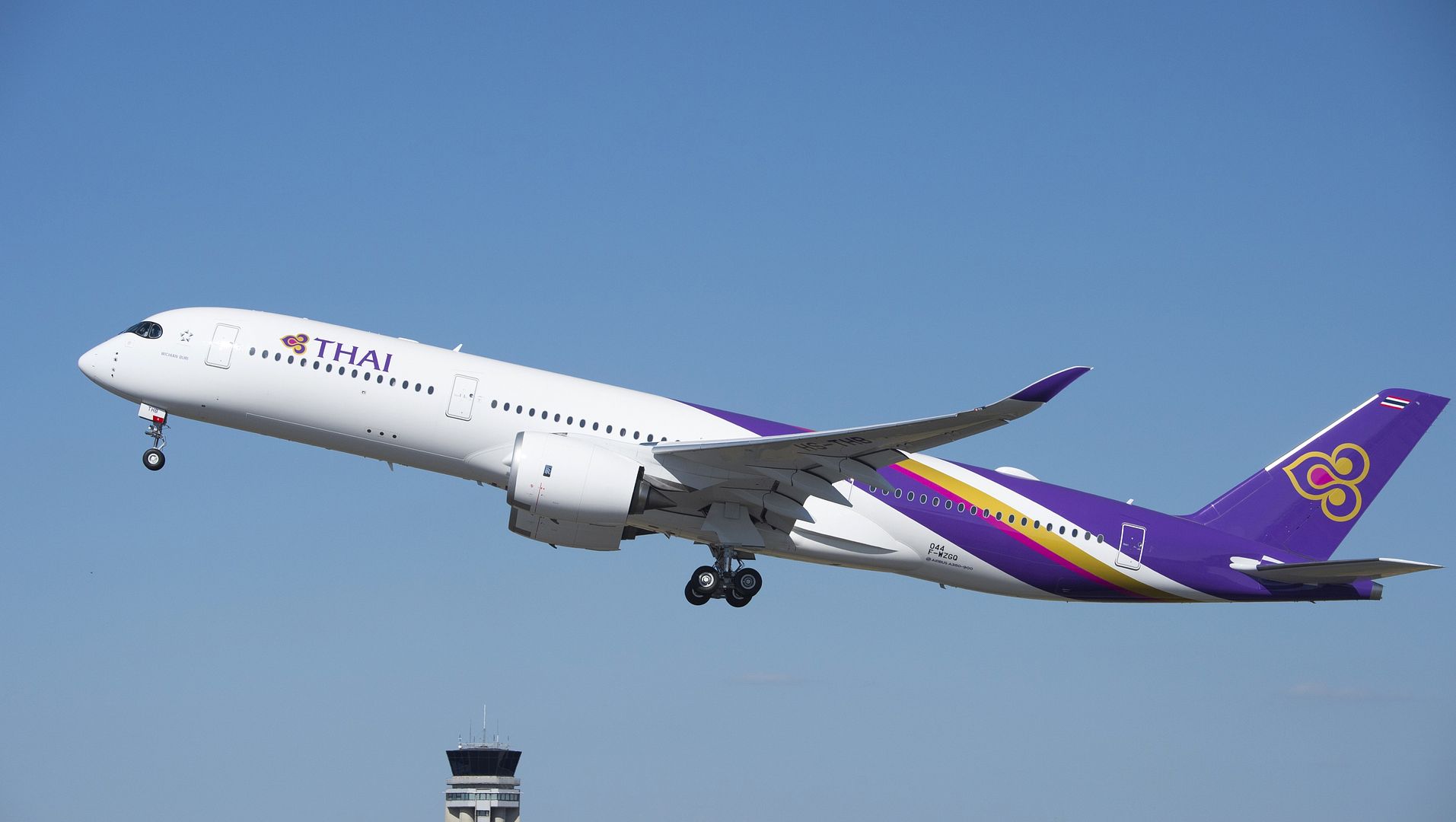
-
 Main AdminAn F-16 Fighting Falcon, E-3 Sentry, F-35A Lightning II, F/A-18 Super Hornet and an EA-18 Growler are set up in a static display Aug. 29, 2016, during Exercise Northern Lightning at Volk Field, Wis. Northern Lightning allowed all five of these aircraft the opportunity integrate and operate in a joint environment while performing counter air, suppression and destruction of enemy air defense and close air support in a contested environment.
Main AdminAn F-16 Fighting Falcon, E-3 Sentry, F-35A Lightning II, F/A-18 Super Hornet and an EA-18 Growler are set up in a static display Aug. 29, 2016, during Exercise Northern Lightning at Volk Field, Wis. Northern Lightning allowed all five of these aircraft the opportunity integrate and operate in a joint environment while performing counter air, suppression and destruction of enemy air defense and close air support in a contested environment.
The Thunderbirds pilots fly over Mt. Rainier, Wash., during their return to Nellis Air Force Base, Nev., August 29, 2016. The Thunderbirds performed at the Airshow and Warrior Expo at Joint Base Lewis-McChord, Wash., August 27-28. (U.S. Air Force photo/Tech. Sgt. Christopher Boitz)
The Thunderbirds pilots receive fuel from a KC-135 tanker from Fairchild Air Force Base, Wash., during their return to Nellis Air Force Base, Nev., August 29, 2016. The Thunderbirds performed at the Airshow and Warrior Expo at Joint Base Lewis-McChord, Wash., August 27-28. (U.S. Air Force photo/Tech. Sgt. Christopher Boitz)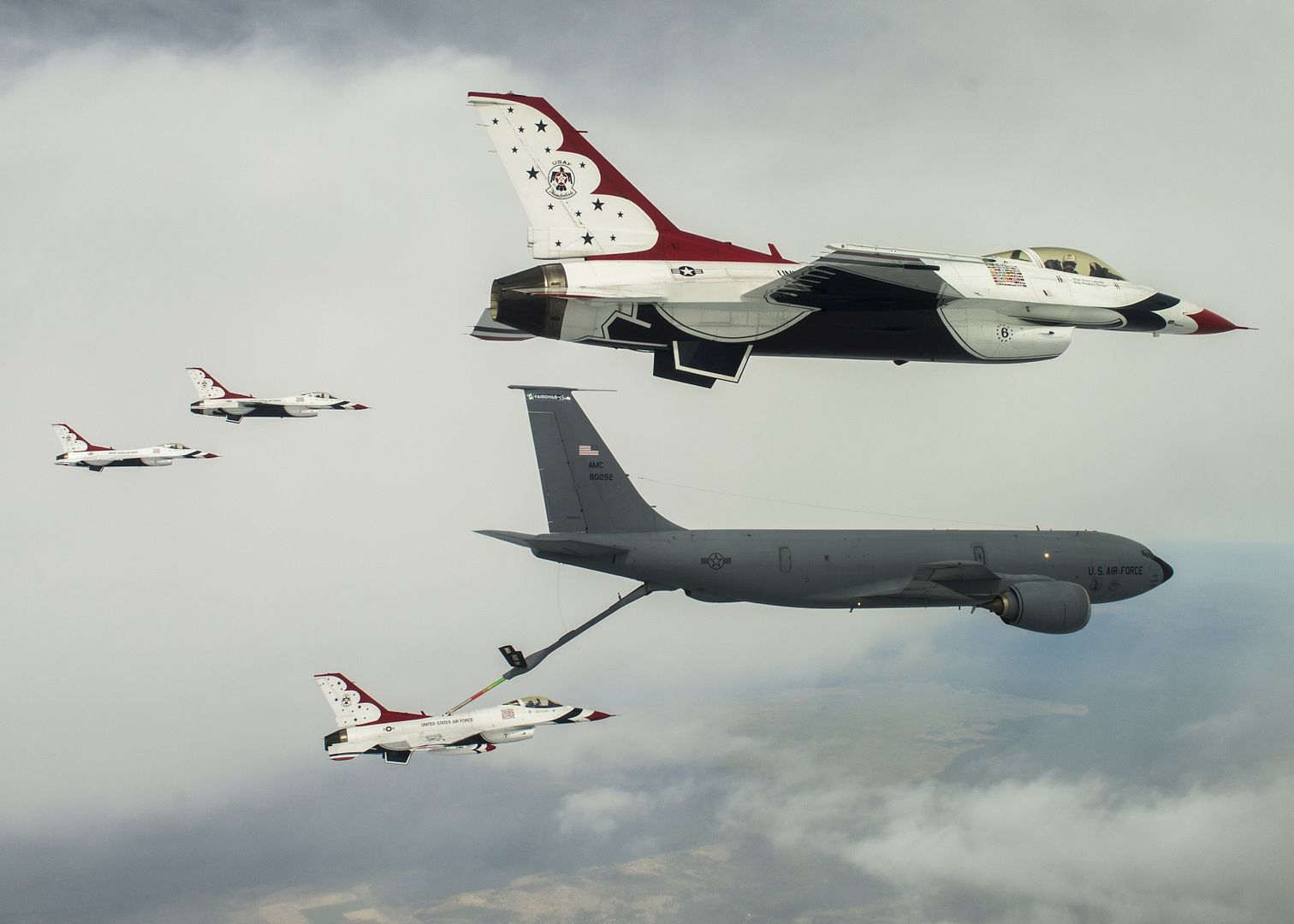
An F/A-18C Hornet with Marine Fighter Attack Squadron (VMFA) 122 takes off during Southern Frontier at Royal Australian Air Force Base Tindal, Australia, Aug. 31, 2016. VMFA-122 executed low-altitude tactics training, flying below 500 feet to evade simulated enemy radar detection or to escape enemy aircraft vectored toward friendly aircraft. By integrating low-altitude tactics into the three week unit level training, pilots gained their final qualifications during Southern Frontier, strengthening the squadrons overall combat readiness. (U.S. Marine Corps photo by Cpl. Nicole Zurbrugg)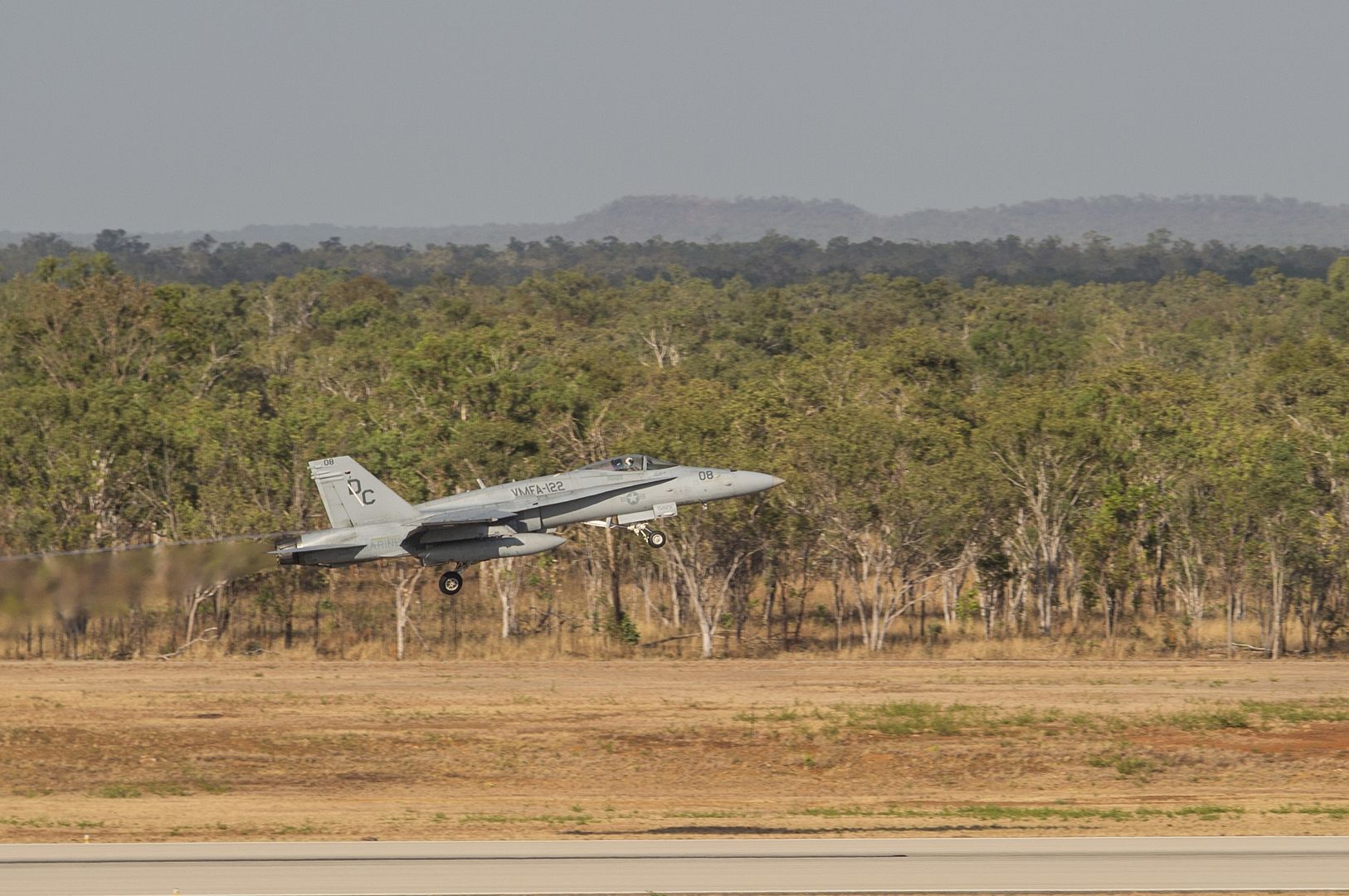
TASHKENT, Uzbekistan, Aug. 31, 2016 /PRNewswire/ -- Boeing (NYSE: BA) and Uzbekistan Airways, the flag carrier of the Republic of Uzbekistan, today celebrated the delivery of the airline's first Boeing 787-8 Dreamliner.
Boeing Delivers First 787 Dreamliner to Uzbekistan Airways
"The delivery of our first Dreamliner marks a new and exciting chapter in our long-standing relationship with Boeing that began back in 1996," said Valeriy Tyan, Director General, Uzbekistan Airways. "We are delighted that as early as in September, passengers of Uzbekistan Airways will be offered a new flight experience and an unmatched level of comfort onboard our Boeing 787 Dreamliner."
"This delivery to Uzbekistan Airways is a remarkable moment in our partnership that has a great value for Boeing," said Marty Bentrott, vice president of Sales, Middle East, Russia and Central Asia, Boeing Commercial Airplanes. "Today, we are proud not only to have Uzbekistan join our growing base of 787 customers in the region, but also at the airline's continued confidence in Boeing's technology and airplanes over the years."
Uzbekistan Airways' fleet consists of 34 aircraft, including nine Boeing 767 and six Boeing 757 airplanes. From its hub at Tashkent International Airport, the airline flies to more than 40 cities around the world.
This first 787 delivery flight to Tashkent will also bring humanitarian aid to patients in hospitals, mother-child clinics, rehabilitation centers and orphanages. As part of its charitable activity in Uzbekistan, Boeing and Uzbekistan Airlines have partnered with AmeriCares, which supports a broad range of health care institutions throughout the country. The flight is one of the many humanitarian shipments that Boeing and Uzbekistan Airways have undertaken together.
The Boeing 787 Dreamliner is an all-new, super-efficient family of commercial airplanes that brings big-jet ranges and speed to the middle of the market. In response to airlines' overwhelming preference, Boeing designed the 787 family with superior efficiency, which allows airlines to profitably open new routes to fly people directly where they'd like to go in exceptional comfort.
Since entering service in 2011, the 787 family is flying more than 350 routes and has established more than 75 new nonstop routes around the world. To date 66 customers worldwide have placed orders for 1,161 airplanes, making the 787 Dreamliner the fastest selling twin-aisle airplane in Boeing history.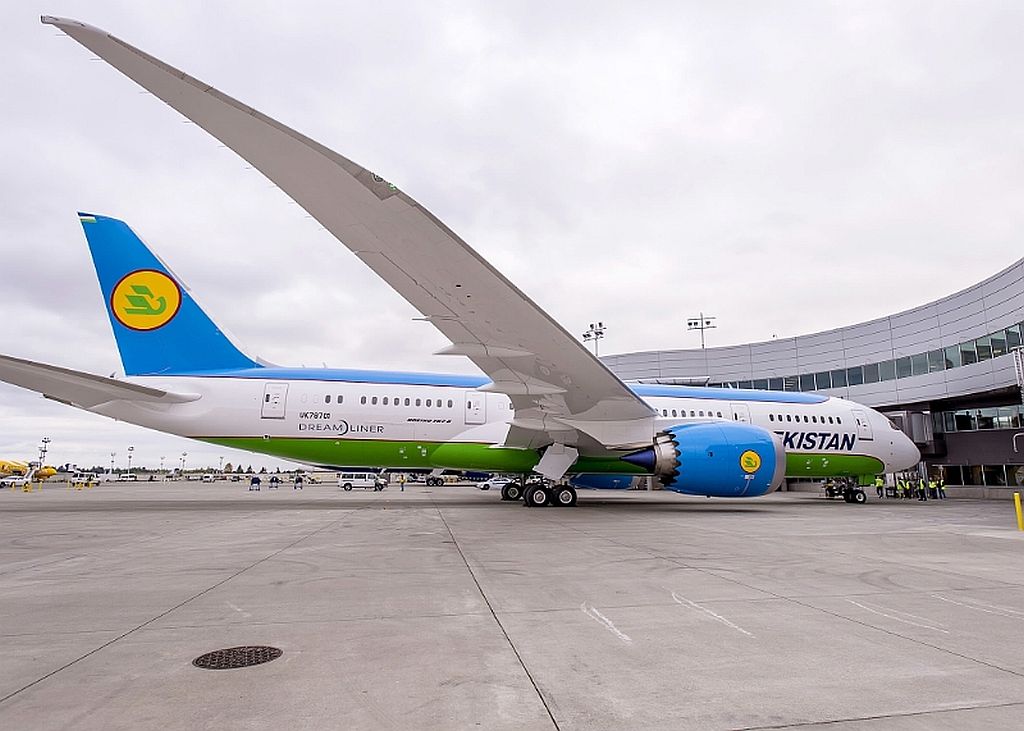
30 August 2016 Press Release
LATAM Airlines Group (LATAM), Latin America?s leading airline group, took delivery of its first A320neo ? showcasing its white, indigo and coral livery and powered by Pratt & Whitney Pure Power PW1100-JM engines ? on Monday, August 29, at Airbus headquarters in Toulouse. LATAM Airlines Brasil will become the first airline in North and South America, and the fifth operator in the world, to operate the ultra-fuel efficient aircraft type.
Executives from LATAM and Airbus attended a delivery ceremony, which also marked the delivery of LATAM?s fourth A350 XWB -- the first with the airline group?s new brand livery. LATAM was also the Americas? first A350 XWB operator.
The aircraft is configured in a 174-seat layout with 18? wide seats and equipped with the innovative Space-Flex cabin configuration. LATAM was the first in Latin America to order the A320neo in 2011, shortly after the program was launched. The airline group has a total of 67 A320neo Family aircraft on order.
Initially, LATAM plans to fly its first A320neo on Brazilian domestic routes to Bras?lia, Belo Horizonte, Campo Grande, Curitiba, Florian?polis, Porto Alegre, Recife, Rio de Janeiro (Gale?o) and S?o Paulo (Guarulhos). In November, LATAM will begin to fly regional routes throughout South America. The second LATAM A320neo, to be delivered later this year, is also expected to operate regional flights. The airline group has more than 250 Airbus aircraft in operation.
?We are pleased to offer our passengers the opportunity to fly the first A320neo in the Americas,? said Enrique Cueto, CEO of LATAM Airlines Group. ?The A320 aircraft family has long served an important role in our fleet, supporting the operation of our unrivalled domestic and regional network in Latin America. With the latest in technology, efficiency and passenger comfort, the A320neo is a welcome addition and will help us to continue to offer one of the most modern and efficient fleets in the industry.?
?Over the years, Airbus and LATAM have grown together to become partners in building today?s dynamic aviation market in Latin America, which is why we are especially proud that the first A320neo in the Americas will be flying in LATAM livery,? said Fabrice Br?gier, Airbus President and CEO. ?We are certain that this aircraft will complement their existing fleet and further their success in the region.?
The A320neo Family incorporates latest technologies including new generation engines and Sharklet wing tip devices, which together deliver more than 15 percent in fuel savings from day one and 20 percent by 2020
The A320neo Family is the world?s best-selling single aisle product line with over 4,600 orders from 85 customers since its launch in 2010 capturing almost 60 percent share of the market. Thanks to their widest cabin, all members of the A320neo Family offer unmatched comfort in all classes and Airbus? 18? wide seats in economy as standard. Including LATAM?s A320neo delivered today, 16 A320neo aircraft have been delivered to five customers.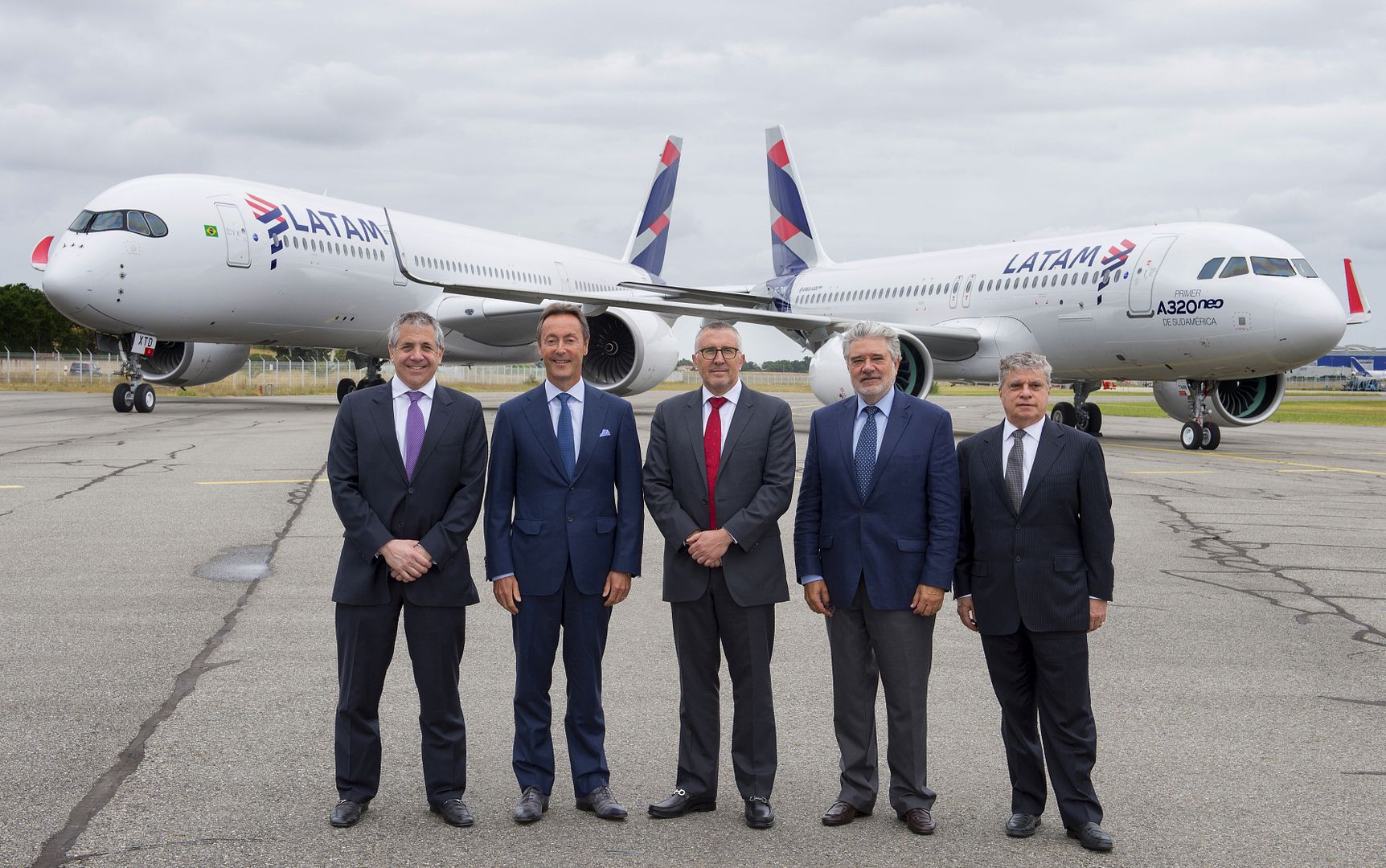
-
 Main AdminFAIRCHILD AIR FORCE BASE, Wash. (AFNS) -- The Air Force celebrated the 60th birthday of the KC-135 Stratotanker Aug. 31. The first Stratotanker flew in August of 1956 and was later delivered to the Air Force in June 1957.
Main AdminFAIRCHILD AIR FORCE BASE, Wash. (AFNS) -- The Air Force celebrated the 60th birthday of the KC-135 Stratotanker Aug. 31. The first Stratotanker flew in August of 1956 and was later delivered to the Air Force in June 1957.
The first KC-135 was delivered to the 93rd Air Refueling Squadron, which was assigned at Castle Air Force Base, California, at the time, but has since been relocated to Fairchild AFB.
The aircraft was originally used to support bombers of the Strategic Air Command. The midair refueling capabilities allowed fighter missions to spend hours on the front lines, rather than a few minutes, which was usually due to the limited size of fuel tanks in the fighters.
?In short order, KC-135s became the backbone of SAC, enabling our bomber force to maintain the peace because of its deterrence capability,? said Jim O?Connell, a 92nd Air Refueling Wing historian.
SAC had the KC-135 in service from 1957 to 1992. Following the inactivation the command in 1992, most KC-135s were reassigned to the newly created Air Mobility Command.
?Despite being called the ?B-52s Flying Fuel Station,? the KC-135 has made an impact locally as well as on the world stage,? O?Connell said. ?The first KC-135 to be assigned to Fairchild (AFB) arrived on Feb. 21, 1958, and went on to make its mark on the world by establishing eight world records in September of that year.?
A few of the records broken include: most distance covered in a closed-circuit without refueling, highest speed for 2,000 km (1,242 miles) and highest speed for 5,000 km (3,106 miles).
In 2001 the first KC-135 with the new Multi-Point Refueling System, which included refueling pods on each wingtip, along with the boom, allowed refueling of any type of aircraft on any mission.
Fourteen years later, another upgrade to the aircraft was made, and Fairchild AFB received its first aircraft modified with the Block 45 communications, navigation and surveillance and air traffic management upgrade.
Since 1958, the tankers of the 92nd and 141st ARWs have supported everything from aeromedical evacuations, command and control, airlift missions, treaty enforcement and overseas contingency fighter and bomber missions.
?The KC-135 and its air refueling mission has been the cornerstone in nearly every contingency and humanitarian operation around the world,? O?Connell said. ?As a testament to the incredible maintenance and support teams, it will likely continue to do so for many years to come.?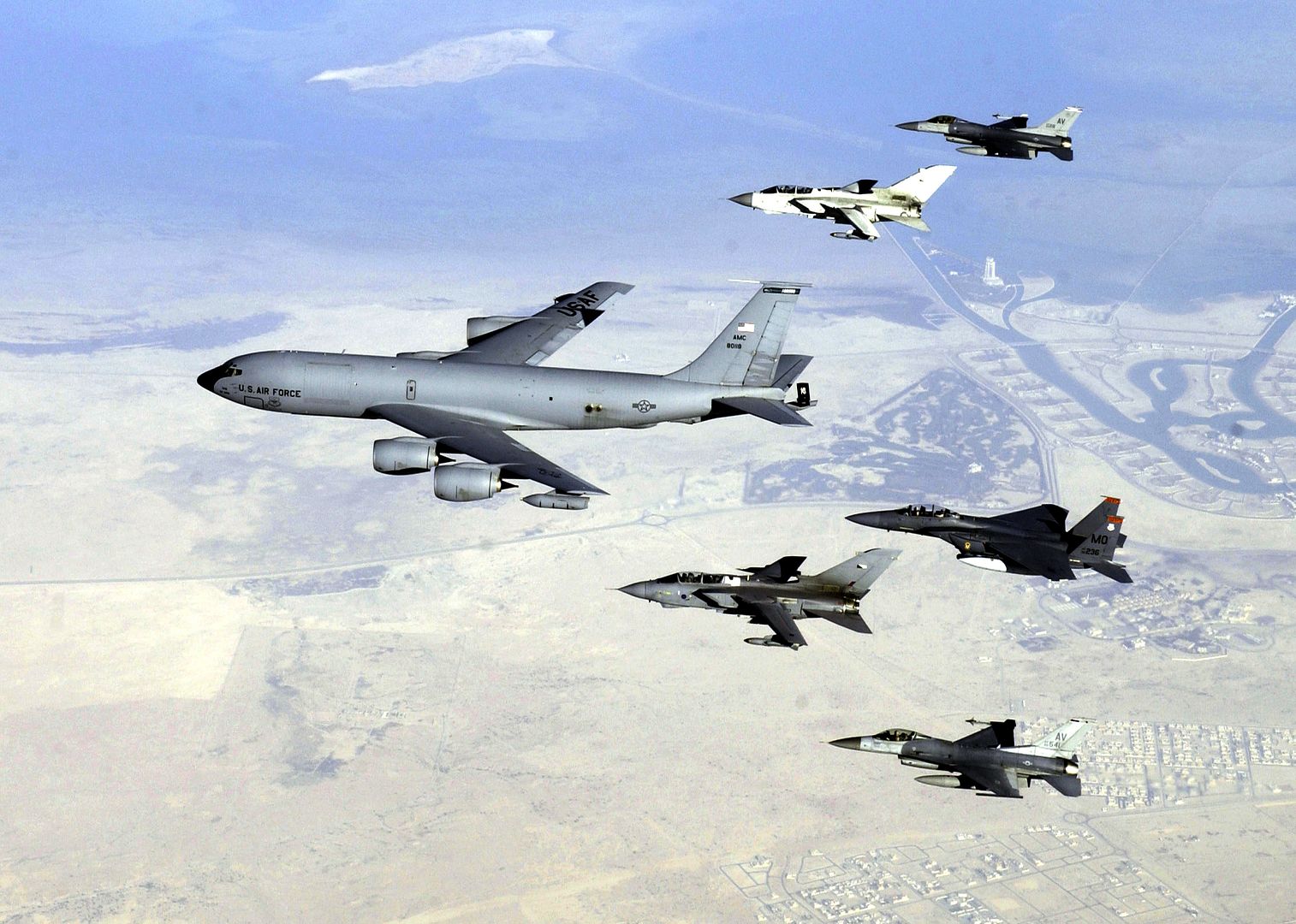
-
 Main Admin58th Aircraft Maintenance Unit weapons load crew members unload a GBU-12 from an F-35A during exercise Northern Lightning Aug. 31, 2016, at Volk Field, Wis. During the exercise, 33rd FW pilots were able to execute offensive counter air, suppression of enemy air defenses, destruction of enemy air defenses, and the employ GPS-guided munitions for close air support. (U.S. Air Force photo by Senior Airman Stormy Archer)
Main Admin58th Aircraft Maintenance Unit weapons load crew members unload a GBU-12 from an F-35A during exercise Northern Lightning Aug. 31, 2016, at Volk Field, Wis. During the exercise, 33rd FW pilots were able to execute offensive counter air, suppression of enemy air defenses, destruction of enemy air defenses, and the employ GPS-guided munitions for close air support. (U.S. Air Force photo by Senior Airman Stormy Archer)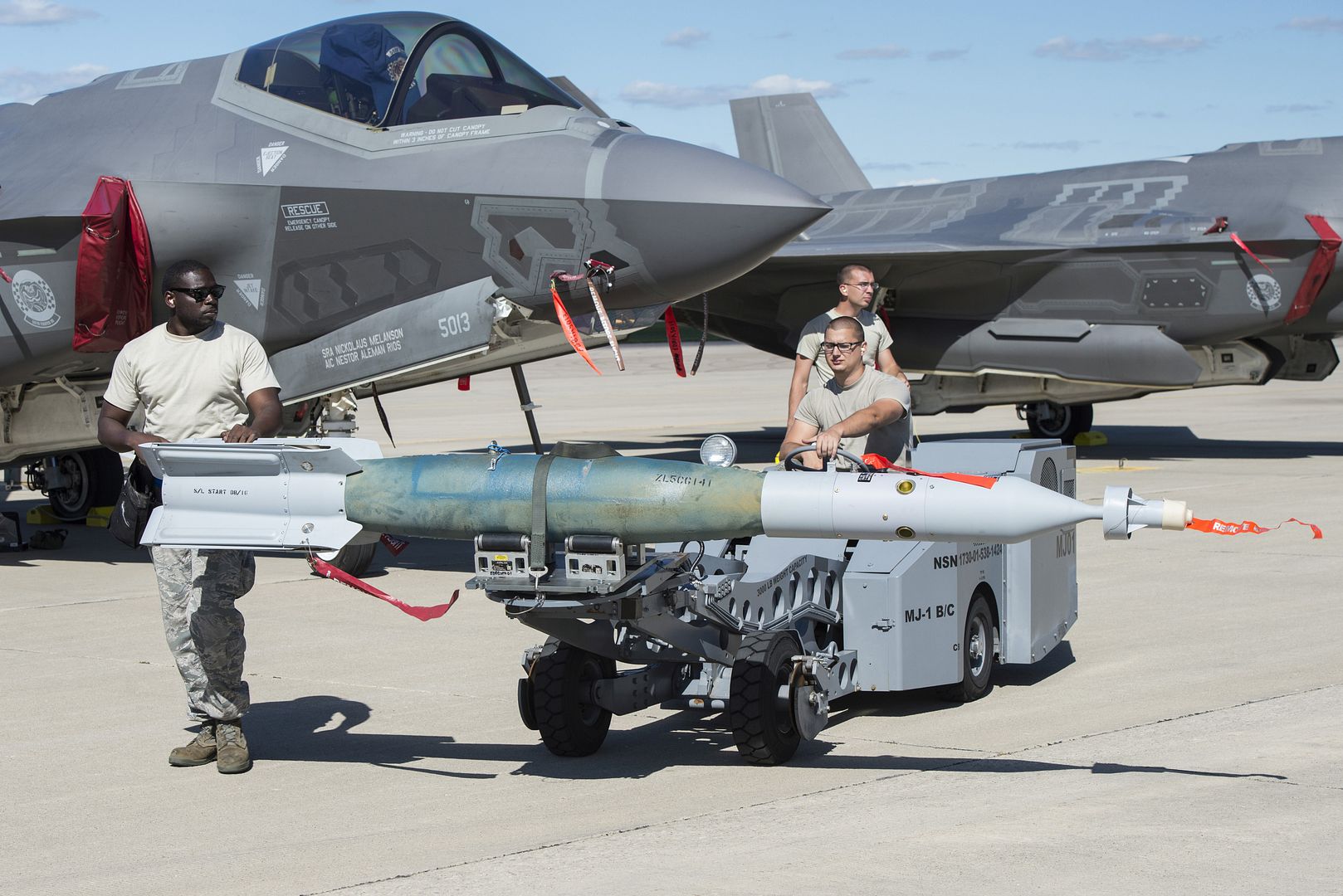
F-22 Raptors, QF-16 Fighting Falcons and T-38 Talons shelter in a hangar at Tyndall Air Force Base, Fla., Sept. 1, 2016. The jets were put in the shelter in preparation for Tropical Storm Hermine, which is expected to impact the Florida Panhandle. (U.S. Air Force photo by Airman 1st Class Cody R. Miller/Released)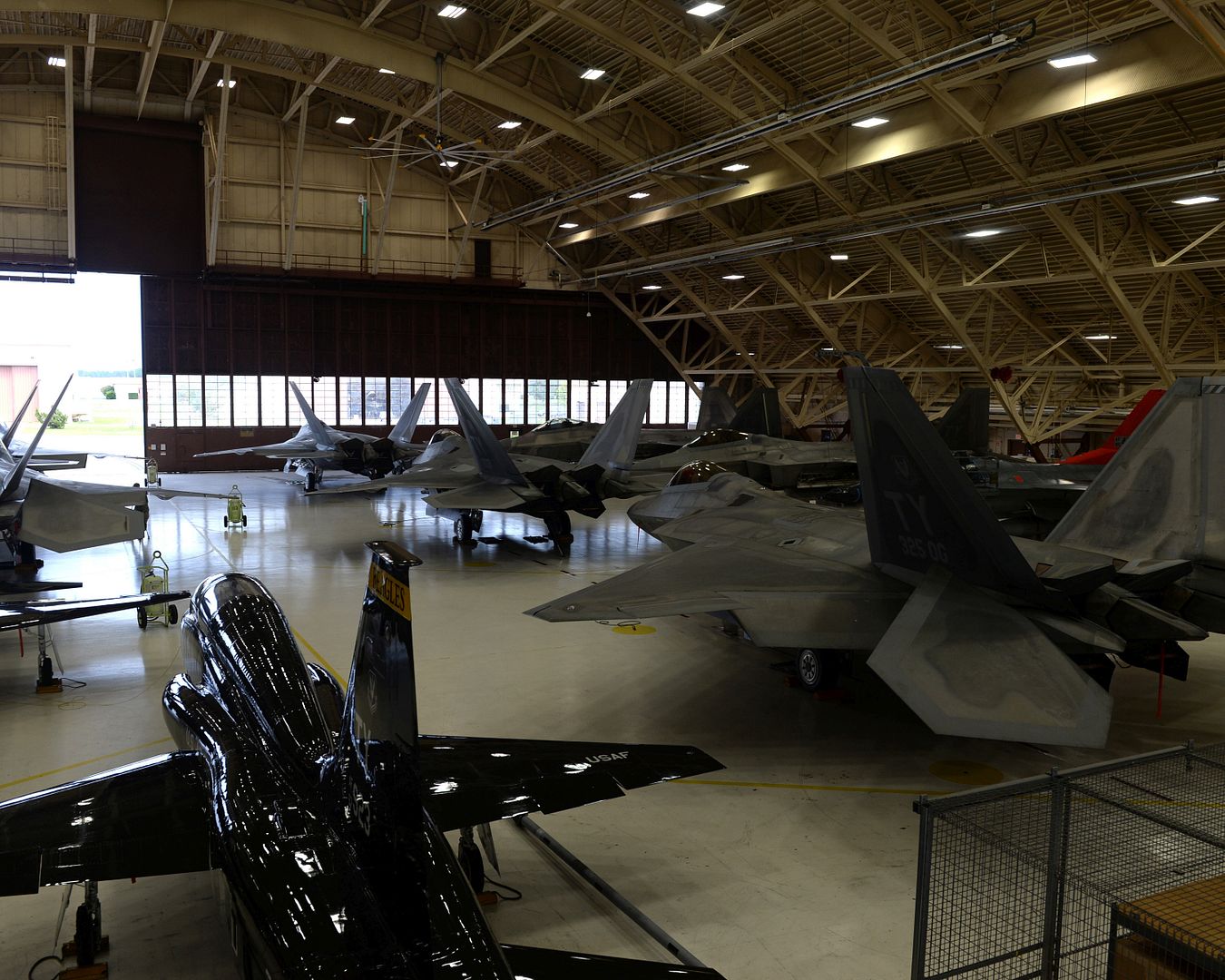
31 August
The Jaguars' Last Roar.
Jaguars from Royal Air Force Cosford taxiied across the airfield for the last time today. Six aircraft from 238 Sqn, No 1 School of Technical Training, were on display with four of them taxiing for one final time. The Jaguar finished 33 years of operational flying service with the RAF in 2007 but since then has continued its valuable service, being used as a ground instructional aircraft to train RAF aircraft apprentices. While the aircraft will no longer be used for taxiing training they will continue to be used in the hangars for all other types of basic aircraft engineering training. They may still be seen on the airfield from time to time but the sound of their twin Adour engines will no longer be heard on the Shropshire airfield.
Pictures taken by Senior Aircraftwoman Alexa Thompson.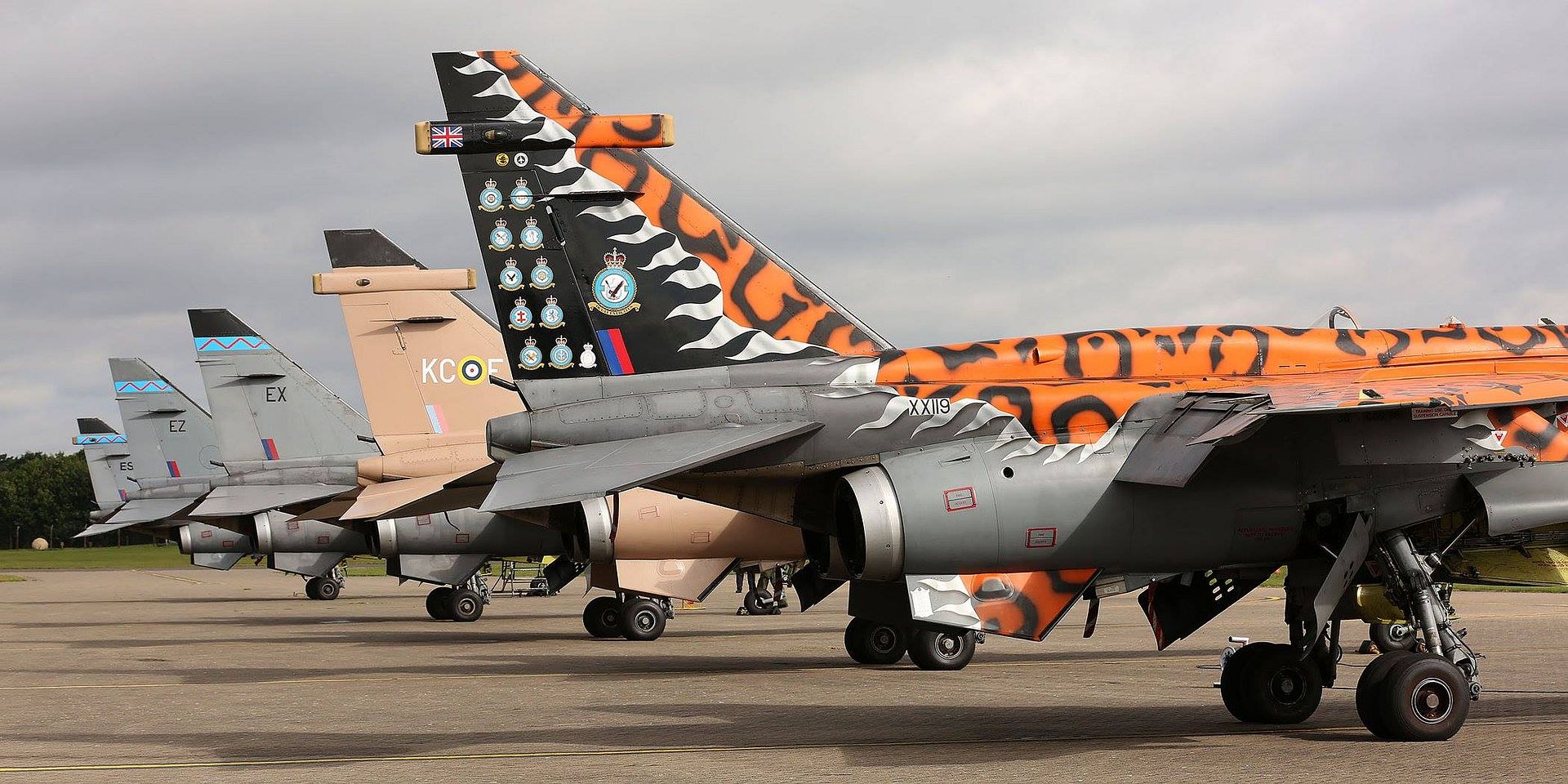
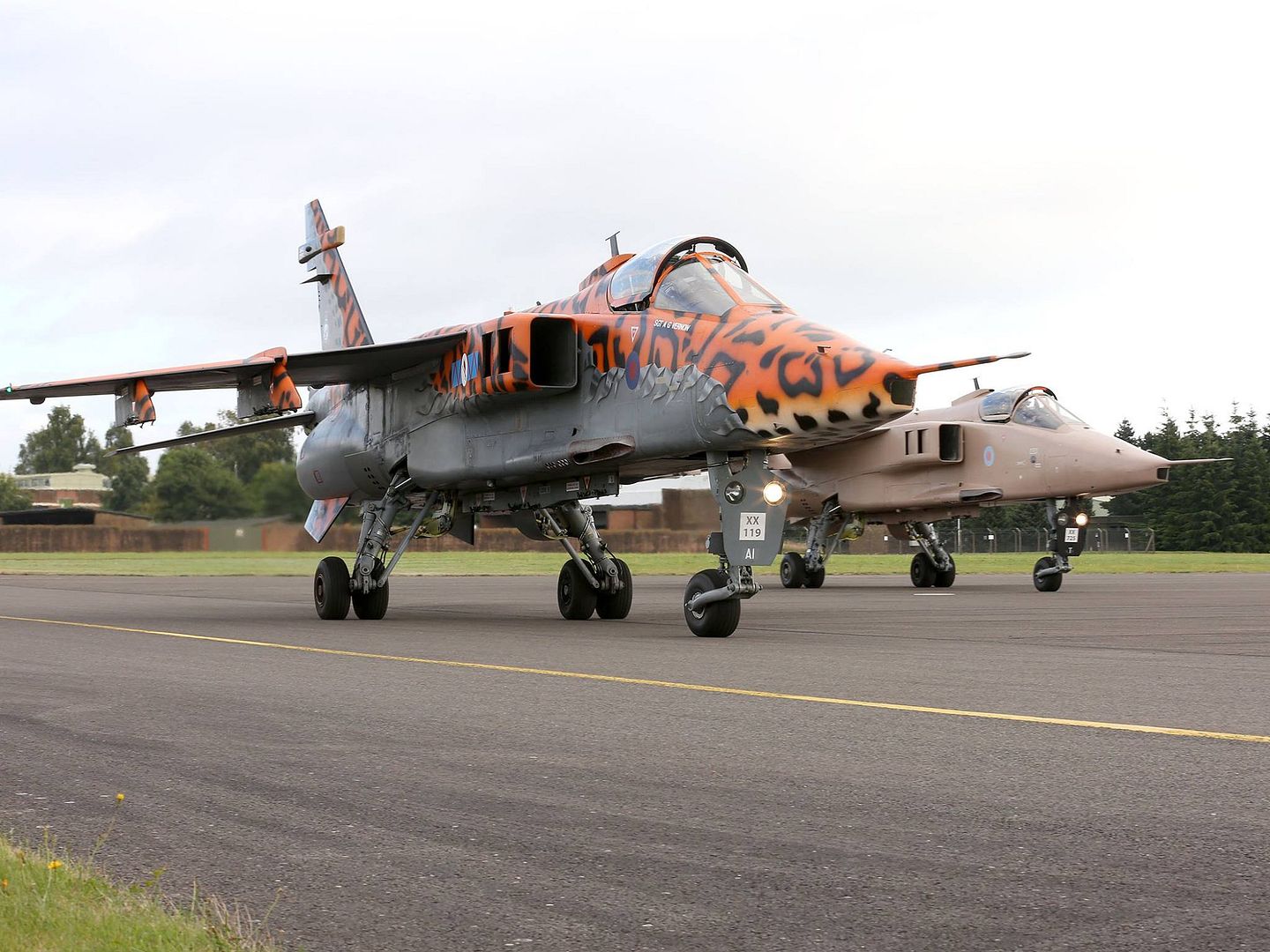
-
 Main Admin
Main Admin
The Thunderbirds pilots fly over West Point United States Military Academy, New York, Sept. 2, 2016. The Thunderbirds are performing at the 2016 New York Air Show in New Windsor, N.Y. Sept. 3-4.(U.S. Air Force Photo by Tech. Sgt. Christopher Boitz)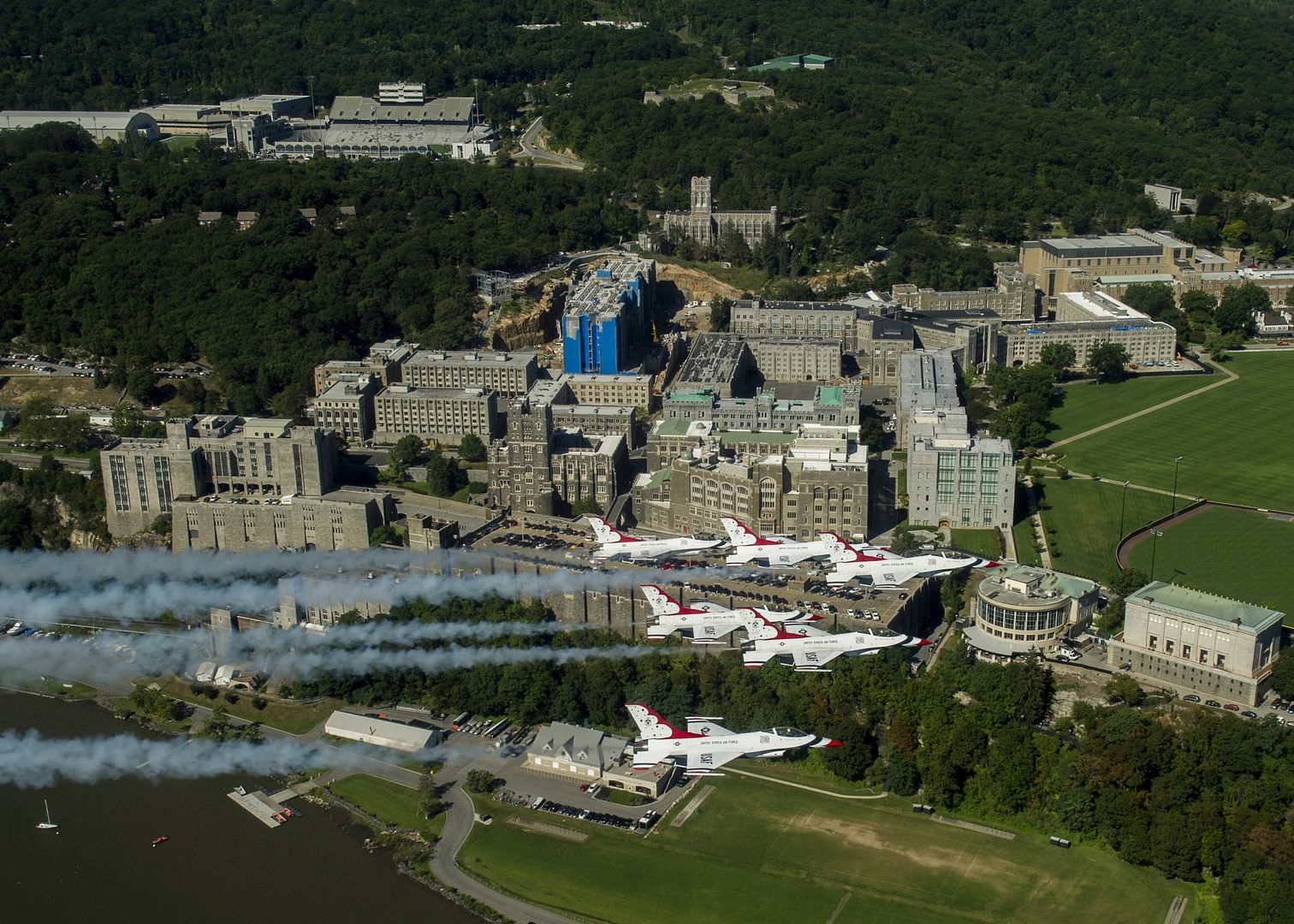
The Thunderbirds pilots fly over New York City, New York, Sept. 2, 2016. The Thunderbirds are performing at the 2016 New York Air Show in New Windsor, N.Y. Sept. 3-4.(U.S. Air Force Photo's by Tech. Sgt. Christopher Boitz)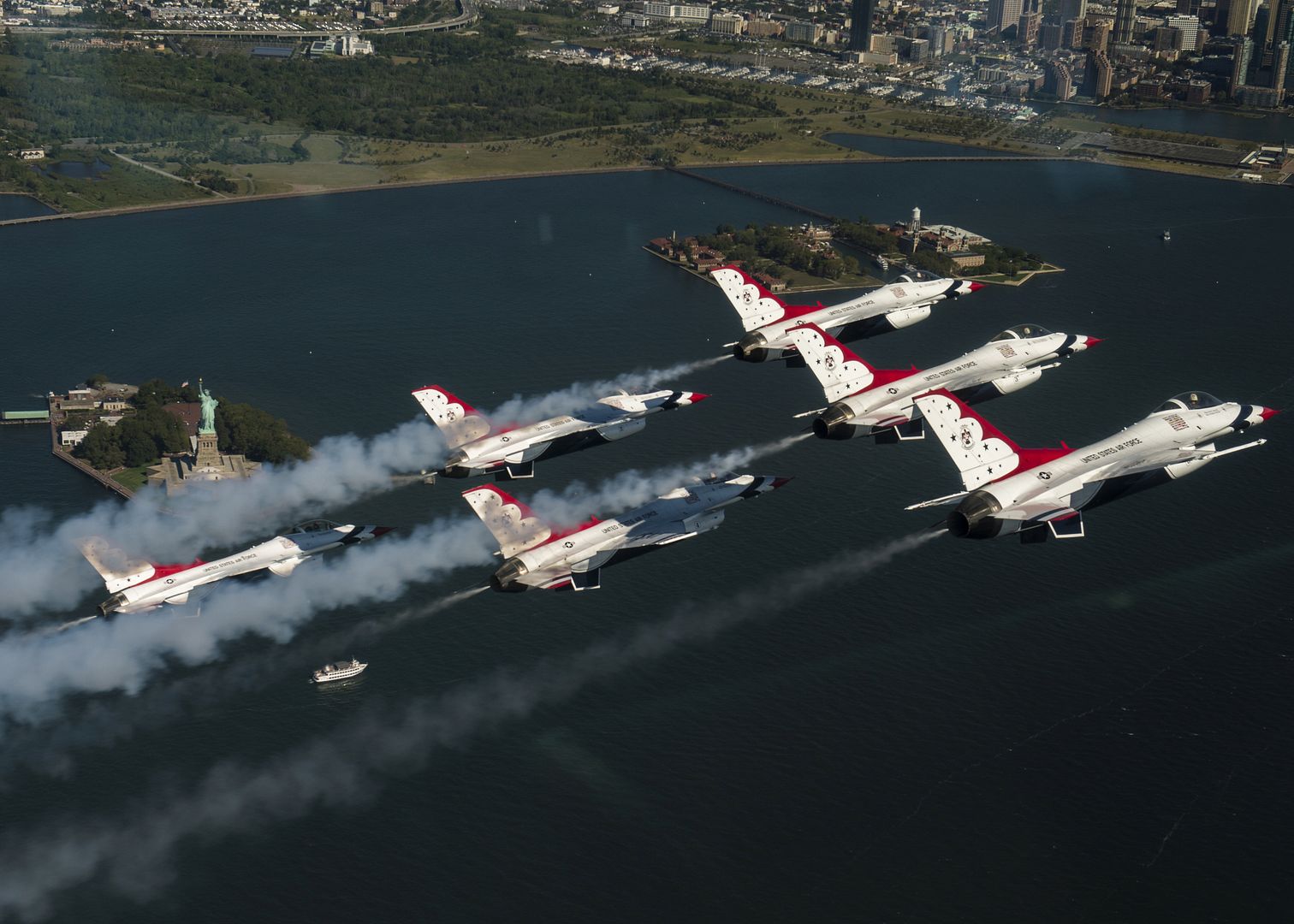
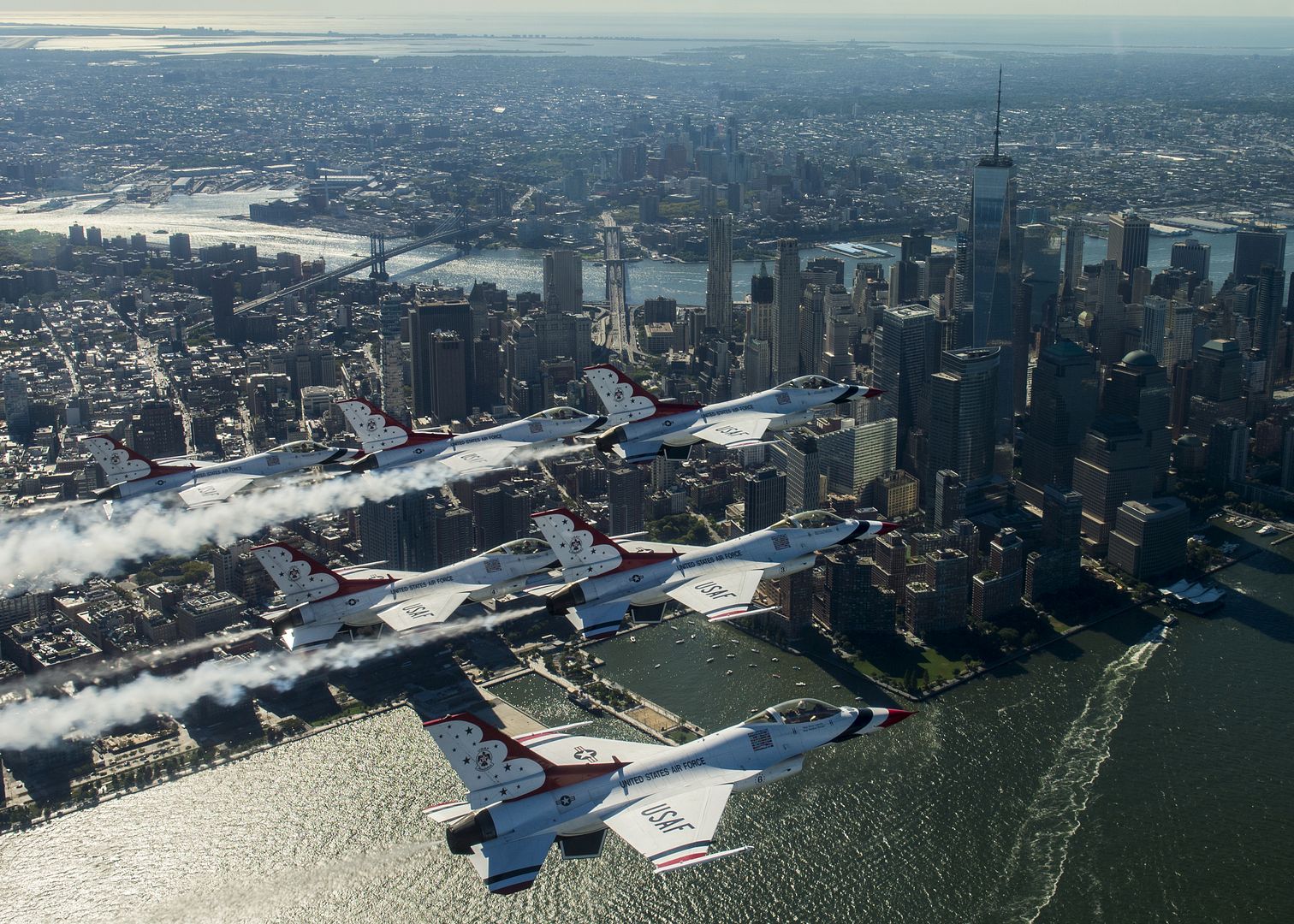
(Source: Royal Air Force; issued Sept 1, 2016)
A formal ceremony has taken place at the Amari Air Base in Estonia, as the Royal Air Force passes on responsibility for the policing of our NATO allies? airspace to the German Air Force.
UK Typhoon fighters have been deployed since April on their third four-month rotation in the Baltic Air Policing Mission, the mission that sees a number of NATO countries taking turns to protect the Baltic skies against the threat of any aggression.
Over this latest rotation, the Typhoons have been scrambled 21 times to intercept 42 separate aircraft, with the most recent coming in the last few days of the mission, this being the interception of a Russian IL-20 Transport Aircraft, NATO codename Coot-A.
This deployment formed part of Operation AZOTIZE and were part of a broader force augmenting Portuguese Air Force F16 fighters operating out of Lithuania.
Air Commodore Ian Duguid, the RAF?s Typhoon Force Commander was present for the Handover Ceremony, he offered:
?With 21 operational scrambles and 42 aircraft intercepted, the RAF?s Typhoon Force has yet again demonstrated its ability to protect NATO?s eastern flank. I wish to thank our Estonian hosts, together with their Latvian and Lithuanian colleagues, for providing the essential support to make this rotation a success once again.
?II(Army Cooperation) Sqn, from RAF Lossiemouth working as part of 140 Expeditionary Air Wing (EAW), have spent the past 4 months with their Typhoon FGR4 aircraft on permanent readiness to scramble in the event of any aircraft approaching NATO airspace that are not conforming to international flight protocols.
?During this deployment, the pilots and engineers of II(AC) Sqn worked professionally to maintain the high state of alert 24 hours a day, 7 days a week. Communications, logistics and administrative support was provided by RAF personnel from a broad cross section of RAF stations including: Lossiemouth, Marham, RAF Wittering, Leeming and Honington.?
Wing Commander Roger Elliot, Officer Commanding of II(AC) Sqn said:
?No. II(AC) Sqn has just completed its first air defence operation in 104 years of history. To secure the Baltic skies, our pilots responded to the call 24/7, however, this was only possible due to the continuous hard work of the Squadron?s engineers. I congratulate every member of ?Shiney Two? for their tremendous performance here in Estonia?.
Wg Cdr Gordon Melville, Commanding Officer of 140 EAW said:
?The professionalism of every member of 140 EAW has been awe-inspiring. Despite a relatively junior team, some experiencing their first overseas operation, everyone has pulled together and worked hard to support each other and achieve excellent results on this strategically important mission. I have been humbled to command such a fine team and congratulate every single member on a job well done?.
RAF Typhoons based at Amari Air Base in Estonia intercepting IL 20 Coot-A as part of the ongoing Baltic Air Policing mission.
Post a reply
- Go to Previous topic
- Go to Next topic
- Go to Welcome
- Go to Introduce Yourself
- Go to General Discussion
- Go to Screenshots, Images and Videos
- Go to Off topic
- Go to Works in Progress
- Go to Skinning Tips / Tutorials
- Go to Skin Requests
- Go to IJAAF Library
- Go to Luftwaffe Library
- Go to RAF Library
- Go to USAAF / USN Library
- Go to Misc Library
- Go to The Ops Room
- Go to Made in Germany
- Go to Campaigns and Missions
- Go to Works in Progress
- Go to Juri's Air-Raid Shelter
- Go to Campaigns and Missions
- Go to Works in Progress
- Go to Skinpacks
- Go to External Projects Discussion
- Go to Books & Resources
